Targeting Africa’s Mining Decision Makers


Celebrating Women in Mining
Gold Processing: Turning Challenges into Golden Opportunities

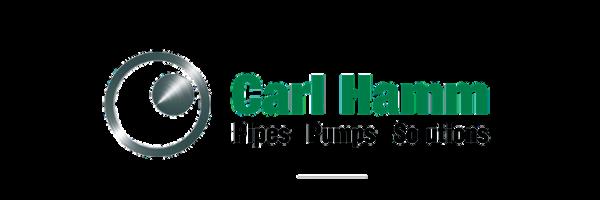

miningbusinessafrica.co.za
Carl Hamm PPS in Namibia
THE INANDA CLUB, FORREST ROAD, INANDA, JOHANNESBURG


The Joburg Indaba is a highly influential mining industry platform, renowned for its straight talk, refreshing insights and collaborative atmosphere. Since its inception, the Joburg Indaba has developed a reputation as a highly regarded and influential industry platform which unpacks a wide range of critical issues affecting all stakeholders in the mining industry.
This 11th edition of the Joburg Indaba will bring together CEOs and senior representatives from all major mining houses, investment firms, Government, parastatals, communities, organised labour and legal and advisory experts.
Plus, the Gala Dinner will be held on 3rd October, when we will be inducting new members into the SA Mining Hall of Fame!

Joburg Indaba 2023 is proudly sponsored by: Lead Sponsor Premium Sponsors

sponsorship@resources4africa.com +27 (0) 11 463 7799 // +27 (0) 61 421 9492 // registrations@resources4africa.com // www.joburgindaba.com REGISTER TODAY!
- 5 October 2023 LEAD SPONSOR Follow us on our website for the latest speakers and programme developments www.joburgindaba.com
For sponsorship opportunities please contact us on:
4
Industry Par tners
Mining
Networking Sponsors
M&D
Cover Image: Carl Hamm PPS
COVER STORY: PG 02
Carl Hamm PPS - The Turnkey Pipe and Pump Partner Delivers Again!
It was more of the same for the team at Carl Hamm PPS as they delivered comprehensive pipe and pump solutions to B2Gold Nambia’s project. The project’s success is attributed to partnerships with industry-leading manufacturers; involving the client in customising suitable solutions; and exceptional support through the project lifecycle.
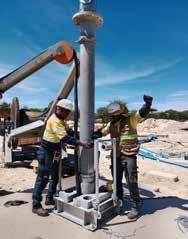

Editor
Nick Barnes
editor@miningbusinessafrica.co.za
+27 10 055 3356
Web/Sub-Editors

Jimmy Swira
Jimmy@miningbusinessafrica.co.za
+ 27 10 055 3356
Anita Anyango
anyangoanita18@gmail.com
Contributing Writers
Chantelle C.
chantellec@miningbusinessafrica.co.za
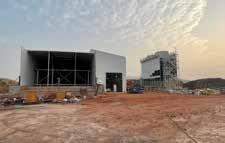
+ 27 10 055 3356
Editor’s Note
A Healthy Dose of Reality Vital
Beneficiation is a complex venture whose success is not always cast in gold.

Resource nationalism is the buzzword in some gold-producing African countries. Conspicuously, it has dawned on the countries that they can extract more value from their resources through various avenues of ‘Incountry beneficiation’.
Truth be told, this is within their right. So, the zealousness of some politicians (sometimes overzealousness) to achieve their countries’ realigned goals is understandable to some extent.
However, the downside from what we have observed is a romanticized notion of the success of their planned ventures at the expense of reality. For instance, this is emerging in West Africa, where leaders of new military juntas are issuing decrees banning the export of raw gold. This move is in a bid to ensure that gold is refined locally.
To call this naïve would be mild.
It is as though the decrees can magically develop a country’s capacity for full-fledged local beneficiation.
While the drive to increase a bigger slice of the cake from a revenue perspective is commendable, a healthy dose of reality is vital
In a nutshell, the reality is that beneficiation is a complex venture whose success is not always cast in gold.
Nick Barnes editor@miningbusinessafrica.com
Susan M. susanm@miningbusinessafrica.co.za

Sales and Marketing
Winnie Sentabire winnie@miningbusinessafrica.co.za
+27 83 530 6832 | +27 10 055 3356
Angeline Ntobeng angien@miningbusinessafrica.co.za
+ 27 078 322 5938
+ 27 010 055 3356
Accounts Precious Chirunga accounts@miningbusinessafrica.co.za


+ 27 10 055 3356
Art Director/Layout Augustine Ombwa
Arobia Creative Consultancy austin@arobia.co.ke

+254 772 187 334
Circulation/Sales info@miningbusinessafrica.co.za

+ 27 10 055 3356
Published By Media Icon (Pty) Ltd
34 52 04 CONTENTS July - August 2023 Media Icon (Pty) Ltd makes every effort to ensure the accuracy of the contents of its publications, but no warranty is made as to such accuracy and no responsibility will be borne by the publisher for the consequences of actions based on information so published. Further, opinions expressed are not necessarily shared by Media Icon (Pty) Ltd. Location: Max Offices Sandton, 145 Second St., Parkmore Gauteng 2196, South Africa www.miningbusinessafrica.co.za
min ngbus nessa r ca co za Target ng A r ca s M n ng Dec s on Make s Carl Hamm PPS n Namibia Celebrating Women n M n ng Gold Process ng: Turning Challenges nto Golden Opportun t es
TEAM
20
Carl Hamm PPS - The Turnkey Pipe and Pump Partner Delivers Again!

It was more of the same for the team at Carl Hamm PPS as they delivered comprehensive pipe and pump solutions to B2Gold Nambia’s project. The project’s success is attributed to partnerships with industry-leading manufacturers; involving the client in customising suitable solutions; and exceptional support through the project lifecycle.

In the dynamic world of mining, success hinges on efficient and reliable infrastructure that can withstand the rigorous demands of projects. Carl Hamm PPS, a leading provider of specialised pipes and pumps, has consistently proved its expertise in helping mines meet this unique challenge through the delivery of turnkey solutions.
Another remarkable success story Recently, Carl Hamm concluded another remarkable success story in Namibia. The dynamic engineering firm provided a comprehensive pipe and pump solution to an ambitious mining project undertaken by B2Gold

Namibia, a prominent mining company. However, accomplishing this feat required meticulous planning and prudent implementation, as the project had unique pipe and pump requirements.
Extensive expertise and impeccable track record
B2Gold Namibia’s project necessitated robust and efficient infrastructure to support its operations. Recognising the critical role of pipe and pump systems, the company turned to Carl Hamm PPS based on its extensive expertise and impeccable track record in the field.
With a rich history spanning almost a century, Carl Hamm PPS has earned a reputation for
2 Mining Business Africa | July - August 2023
Turnkey Pipe and Pump Solution for B2Gold Namibia Project
excellence, offering innovative and high-quality products to the mining industry. Hence, B2Gold Namibia did not hesitate to engage Carl Hamm PPS for its unique pipe and pump requirements.
Customised Pipe and Pump Systems
Understanding the unique requirements of B2Gold’s project, Carl Hamm PPS worked closely with the client to design and implement customised pipe and pump systems. The team involved conducted thorough assessments of the site, leveraging extensive experience in the mining sector to consider factors such as water management, dewatering, and material
transportation. Carl Hamm PPS provided suitable comprehensive solutions to optimise efficiency, reduce operational costs, and ensure the smooth flow of operations.
Partnerships with industry-leading manufacturers
Carl Hamm PPS was able to provide these comprehensive solutions thanks to its partnerships with industry-leading manufacturers, one of its key strengths. Through these collaborations, the company can offer a comprehensive range of top-quality products and services.
Regarding the B2Gold project, Carl Hamm PPS collaborated with renowned partners such as Prinsloo Drilling and Woodrow Engineering.


Collaborative Approach and Exceptional Support
Another key element pivotal to the project’s success was the company’s collaborative approach and unwavering dedication to customer satisfaction. From the initial consultation to project completion, the company’s team of experienced professionals worked closely with B2Gold, providing exceptional support and guidance at every stage. In the end, by fostering strong relationships with clients and maintaining open lines of communication, Carl Hamm PPS ensured that the solutions provided aligned perfectly with the project’s requirements and exceeded expectations.
Concrete Testament
Without a doubt, the collaboration between Carl Hamm PPS and B2Gold stands as a concrete testament to the company’s expertise in delivering turnkey pipe and pump solutions. Moreover, it highlights how tailored solutions can drive success in the mining industry. Ultimately, by leveraging its expertise, cuttingedge technologies, and strong partnerships, Carl Hamm PPS provided B2Gold Namibia with reliable, efficient, and durable infrastructure that contributed to the project’s triumph.
Mining Business Africa | July - August 2023 3
Progressing towards the Promised Land
At 12%, the mining sector has one of the lowest representations of women compared with other sectors. However, Women in Mining South Africa (WiMSA) considers this as a springboard to progress from.
August is Women’s Month in South Africa. And as you would have thought, in celebration, traditionally, there is a lot of pomp and ceremony. But the lingering question is: After the dust settles, in fairness, are women progressing, regressing, or stagnating? Specifically, how can we objectively assess performance in a critical sector like mining?
It all depends on the criteria employed; progress is relative.
This is the position two executives - Raksha Naidoo, Chairperson of WiMSA, and Noleen Pauls, the Chairperson of the WiMSA Board of Directors, hold. Briefing Mining Business Africa, they shed light on the following areas of the participation of women in mining: status of progress, implications of enabling policy, and WiMSA’s role and the obstacles and how to tackle them.
Measuring the progress of women
Granted, the criteria for measuring women’s progress in mining can be a grey area. However, Pauls suggests that analysing the number of women in core positions and management could be more rational.
Based on the statistics furnished, there is an indication of measured progress, though not at the level WiMSA or other stakeholders in the mining sector would have wished. The number of women working in the mining sector has increased significantly over the years – from 4% before 2002 to the current 12%.
Ostensibly, compared with other sectors, this modest statistic makes the mining sector the least gender-diverse industry. Markedly, the sector has its work cut out.
However, the mitigating circumstances could be that the challenges that mining - as a skills and capital-intensive sector - faces are quite intricate. That is without mentioning the complexity of policy-related issues.
Additionally, gathering current data is a challenge. Hence, statistics for core workers, support staff, and contract workers are not well documented. Possibly, this implies that the data could be underestimated.
Enabling Policy
Asked if there may need for further policy changes to create a more enabling environment. Pauls clarifies that, in fact, the changes registered thus far can be credited to policy. She hails the 2002 Mining Charter (BroadBased Black Socio-Economic Empowerment Charter for the South African Mining and Minerals Industry) as the most groundbreaking development. The Charter set a baseline of 10% female participation within five years.

“Having legislation in place highlighted the need for change and drove gender equality in the workplace. And this focus has led to necessary adjustments e.g. change facilities, PPE and equipment, recruitment strategies, BEE policies, women-only core-business teams, mentoring and support structures.
These changes have made the mining industry a more inclusive and safer workplace that has attracted women in all areas, more especially underground,” Pauls illustrates.
Having witnessed the relative gains of the Mining Charter, WiMSA is cautiously optimistic that the updated Charter of 2017 will result in further advances, precisely in management positions and business.
• Management positions
Pauls firmly believes higher thresholds for management positions underlined in the Charter of 2017 will facilitate more participation of women in decision-making roles. “I think the updated Charter will lead to higher retention of women within the industry. Many women leave when they hit the ‘glass ceiling’ in the industry
• Business
Another area where WiMSA sees the updated Mining Charter of 2017 bringing forth tangible changes is increasing the participation of women-owned businesses in the supply chain, specifically black-women owned. According to the updated Charter, a minimum of 5% of total mining goods procurement spend and 10% of the total spend on services must be sourced from Black-Owned Companies. Specific to women, a minimum of 50%+1 vote female Black Person which is a start for increasing female entrepreneurs in the mining industry.
Nonetheless, the reality is that it is one thing to have a comprehensive policy, and totally another to ensure it produces desired outcomes.
Taking the bull by the horns
For this reason, cognisant of this, Naidoo pronounces that WiMSA is taking the proverbial bull by the horns. She enthuses that the organisation is playing a part in facilitating the increase in participation of women in the mining sector within the ambit of its mandate, highlighting the Career Booklet, and Mentorship and Support.
• Career booklet
Naidoo defines the core focus of the Career
4 Mining Business Africa | July - August 2023 Women in mining
Noleen Pauls, the Chairperson of the WiMSA Board of Directors
Booklet: “At WiMSA we focus our efforts on attracting women to the industry from the time they are in high school. We developed a Career Booklet in 2022 aimed at piquing the interest of young girls in the world of STEM and showing them the opportunities for the career development of women in mining.”
• ·Mentorship and support
In addition, WiMSA focuses on personally and professionally helping women become the best versions of themselves. This is through mentorship and by creating a world and support system that is a safe place for women to share their truths and seek guidance and help.
More ground to be covered
While there have been strides, there is still more ground to be covered, Naidoo points out. “Amongst a host of aspirations, we would love to see more bursaries being offered to young girls to study STEM subjects. We want to see a more inclusive workforce focused on the development of women’s careers. We want to see women’s voices heard and their ideas implemented, and see their leadership bring about positive growth in our industry.”
Another challenge that the mining industry faces is attracting women and retaining them. So, WiMSA’s position is that, at the outset, practices that perpetuate gender biases should be removed. “It should be about finding the best people, by the best people in the recruiting process, including both men and women who know a company’s technical and emotional values. But it’s human nature to be drawn to similar people. And so, people recruit others like themselves, meaning that the male domination of mining companies leads to a self-perpetuating problem,” Pauls notes.
Another possible cause for the high turnover of skilled women from the mining sector is huge wage disparities. Sadly, even with South Africa’s legislation aimed at preventing gender discrimination in the workplace, the country has a median gender pay gap of about 20%.
Equitable approach
Given this, WIMSA calls for an equitable approach to achieving retention, mainly entailing the following:
• Removing male-biased management strategies and bringing in visible and effective policies geared towards meeting both men’s and women’s needs and practices to create femaleintegrated cultures.
• Providing appropriate emotional support and mentorship.
Besides, Naidoo believes mechanisation could be just the right tool from the perspective of achieving wage disparity.
There have been a lot of reservations about the adoption of mechanisation in mining, with
unions fearing it could render some careers obsolete. On the flip side, Naidoo is hopeful that, indirectly, mechanisation will help narrow the gender pay gap. “As mining becomes more mechanised, physical strength and stamina will become less important than fine motor skills, dexterity, and problem-solving creating significant opportunities for women in the industry.”
Continuous pursuit
Playing its part, WiMSA is not resting on its laurels in its continuous pursuit of increasing the representation of women in South Africa’s mining sector.

One of the low-hanging fruits within reach that the organisation has earmarked aimed at the foundation stage is the continuous development of its Career Booklet. Additionally, it will expand its work by hosting more Career Days and getting involved.
A critical part of the initiative at the foundation stage is keeping more girls in school and allowing them to further studies uninterrupted. One of the ways of realising this is through the drive to end period poverty, which is a big challenge resulting in absenteeism.
Ultimately, WiMSA hopes that, through its initiatives and those of other stakeholders, more women will be encouraged to explore career opportunities in mining.
Advice to young women
Nevertheless, WiMSA and other stakeholders can only do so much. Ultimately, the onus is on the girls to seize available opportunities. One of the challenges young girls face is that young women are discouraged by societal stereotypes attached to careers traditionally associated with men. ‘Manly’ careers as one analyst called them.
So, imparting a nugget of wisdom to young women, Pauls says, “My advice to young women interested in joining the mining industry would be not to be put off by its reputation as a male-dominated world. There are so many opportunities within the sector where you can find your niche and have a fulfilling and exciting career. But retaining confidence and selfesteem can be a challenge because many male colleagues will try to undermine your capabilities by painting you as incompetent. And don’t put yourselves in the stereotypical boxes either. Find mentors and networks to support you and to remind you that you are awesome.”
Wish for Women’s Month 2024
On her part, Naidoo’s Women’s Month 2024 wish is to see more women in leadership positions in the mining sector. “We want to see more female graduates at university, and we want to see more young girls given the freedom to study, learn and grow. We want to hear more men advocating for change and working alongside WIM organisations to create a safer working environment for women. Above all, we want to see sustainable plans in place that allow for a better world for women in mining.”
By and large, WiMSA views the steps as progress towards reaching the Promised Land of gender parity in mining.
COVID-19 – a silver lining behind the dark cloud
The COVID-19 pandemic, most especially the prevention measures, unwittingly had a telling economic impact, with record losses for businesses, some employees were retrenched. Women were the most affected, bearing a huge burden.
It is too early to understand the full impact of COVID-19 on the impact of women in mining. But there is a silver lining behind the dark cloud, observes Pauls.
She says one positive result is that employers have had to become more flexible and innovative. “Women have been advocating for years to be able to work from home, and COVID restrictions proved that it is possible to do this effectively while taking care of their families.”
Mining Business Africa | July - August 2023 5
Raksha Naidoo, Chairperson of WiMSA



Determining the safety of wastewater
WearCheck Water operates two ISO/IEC 17025:2017-accredited laboratories – one in Cape Town, the other in Johannesburg, and conducts water analysis for clients from all over Southern Africa.
The mining industry is strictly regulated by national laws that govern the disposal of environmentally safe wastewater, and in many countries, is one of the prerequisites for the renewal of a mining licence.
Additionally, increasingly stringent regulations compel mining companies to comply with acid mine drainage in line with the global trend towards earth-friendly business practices.
WearCheck Water, a division of condition monitoring specialist company, WearCheck, assists many mines in the Southern African region to comply with wastewater regulations. The company conducts scientific analysis of water samples, which reveals the chemical composition of the water to a precise degree.
Moses Lelaka, WearCheck Water’s technical water lab manager in Johannesburg, explains that the company tests water from any source. ‘We conduct analysis on water from many sources – ranging from drinking water to factory/ industrial/mining effluent, and everything in between – to determine the presence and levels of potentially harmful substances, whether the water is used for drinking, agriculture or to be
disposed of after an industrial process,’ he said.
Lelaka outlines some of the mine licence regulations. ‘For example, in South Africa, wastewater regulations are regulated and monitored by the Department of Mineral Resources (DMR), which is mandated to ensure the transparent and efficient regulation of the South African mineral resources and minerals industry.
‘The DMR works hand in hand with the Department of Environmental Affairs and the Department of Water and Sanitation to ensure that the process of mineral regulation does not have any impact on the environment. In some cases, if the mineral is next to a river or stream, water samples are taken from upstream and downstream of the mine to ensure that the mining activities do not affect the water quality of the stream or the river.’
WearCheck Water operates two ISO/IEC 17025:2017-accredited laboratories – one in Cape Town, the other in Johannesburg, and conducts water analysis for clients from all over Southern Africa.
Lelaka outlines the analysis process, ‘Water
samples of around one litre are sent to our laboratories. Our technicians select the relevant tests for the water sample, depending on the needs of the customer. They identify what is wrong with the water and advise customers on possible consequences of using / discarding such water.


‘Water analysis is conducted using various accredited techniques, such as: photometric, electrometric, colorimetric, gravimetric, ICPOES, ICP MS and enzyme substrates. These techniques obtain the best possible results in chemical and microbial analysis of effluent/ wastewater, drinking water, processed water, surface water and groundwater.
‘In the case of the mining sector and other industrial operations needing to dispose of wastewater into a river system, the sea or even simply down the drain, there are strict by-laws that must be adhered to, outlining the “acceptable” levels of contaminants before disposal, to prevent possible fines or even prosecution. WearCheck Water’s technicians determine the exact levels of contaminants and advise on acceptable levels for safe discarding.
8 Mining Business Africa | July - August 2023 Waste water safety analysis
Moses Lelaka, WearCheck Water’s technical water laboratory manager, helps mining projects to comply with strict wastewater disposal regulations through regular monitoring of water samples.
WearCheck Water laboratory technician, Katlego Mokoroane, conducts scientific metal-content analysis of water samples using an Inductively Coupled Plasma (ICP) in the company’s Johannesburg laboratory.
‘Many of our mining customers operate boreholes, using the water in the mining process. We regularly monitor the water quality from the boreholes to test whether contaminants from the mining process have leached into the water supply.

‘As an example - cyanide is commonly used in gold mining, the presence of this toxin must be constantly monitored. Furthermore, uranium is commonly found in the ore with gold, and as uranium is radioactive, it is important to monitor the levels and check whether it has leached into the water supply. This is even an issue on disused mines and mine dumps – many of our customers living near these come to us to test the quality of their drinking water. Chromium-6, a carcinogenic element, is a by-product from chrome mines, so it is important to know if humans will be ingesting water with high levels of this.
Wastewater quality testing solutions for mining projects:
‘In South Africa,’ says Lelaka, ‘the DMR provides the mines with the guidelines depending on what is being mined, and these are very specific – in other words, coal mining has different specifications from gold mines and diamond mines, and so on.


‘WearCheck Water is cognisant of the government wastewater regulations and
requirements, and advises all mines to comply with their national laws and follow all stipulations regarding the quality of wastewater.
‘In South Africa, the National Water Act of 1998 ensures that nation’s water resources are protected, used, developed, managed and controlled in a way which takes into account promoting equitable access to clean water.’
The South African National Water Act of 1998, Government Gazette 4 June 1999 can be viewed via this link: https://cer.org.za/wpcontent/uploads/2010/11/GN-704-Regulationson-Mining-Water.pd.
Outlining the additional benefits of scientific water analysis, Lelaka, indicates that health is a primary reason for many customers testing for drinking water safety, both private and in the restaurant trade. Additionally, water quality is critical in the medical sector, for example in dialysis machines, as well as in the agricultural field - irrigation water quality is a critical aspect of greenhouse crop production. Water with high alkalinity can affect nutrient uptake by the plants and cause nutrient deficiency, which compromises crop health.
WearCheck’s extensive range of condition monitoring services also includes the scientific analysis of used oil and other fluids, asset reliability care (ARC), transformer oil testing, lubricant-enabled reliability (LER) services and advanced field services (AFS), (rope testing,
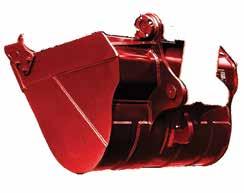
technical compliance and non-destructive testing), amongst others.

‘Ongoing water condition monitoring is an invaluable tool that signals environmental changes in the water table that can quickly occur due to seasonal changes, rainfall, drought, heavy industry, agriculture, natural disasters, and so much more. Responsible monitoring gives an indication of any changes in water quality that may cause harm to life or the environment.’
WearCheck Water offers water analysis services in every region in Africa where the company has a presence (RSA, Zambia, Zimbabwe, Ghana, Namibia, Mozambique, and the DRC). These locations are predominantly based near areas where mining is the primary economic activity.
For more information, please visit www. wearcheck.co.za, email marketing@ wearcheck.co.za or call WearCheck Water in Johannesburg on +27 11 392 6322 and Cape Town on +27 021 001 2100.
WearCheck, Africa's leading condi�on monitoring company, is commi�ed to serving the mining industry with its range of sophis�cated analy�cal techniques.
Our specialist oil, coolant and fuel tes�ng programmes allow customers to reduce maintenance costs, avoid unexpected mechanical failures and ul�mately reduce unscheduled down�me.
Unlock Machine Reliability!
Mining Business Africa | July - August 2023 9
Branches Botswana DRC Ghana Mozambique Namibia Uganda Zambia Zimbabwe +267 311 6829 +260 977 622 287 +233 54 431 6512 +258 85 792 7933 +264 81 141 7205 +256 78 529 6994 +260 212 210 161 +263 24 244 6369 + 27 31 700 5460 marke�ng@wearcheck.co.za www.wearcheck.co.za South Africa (Head Office)
Tes�ng and Analysis | Lubricant-Enabled Reliability | Asset Reliability Care C M Y CM MY CY CMY K WCK Mining Business Africa 180x130 copy.pdf 1 2023/05/17 10:40:14
Condi�on monitoring is KEY to mining produc�on
Certification of hauliers for transportation of high-value cargo
Certifying Hauliers, Safeguarding Assets
DPS March is dedicated to providing effective certification services for hauliers before they are contracted to transport High-Value Cargo (HVC) for mining companies, or their contracted Logistics Service Provider (LSP), to transhipment ports within Southern Africa for export abroad. In this way, the risk of theft of HVC is mitigated.
DPS
DPS March (Africa) has 30 years of extensive experience in the investigation of HVC thefts and risk management assessments on behalf of Lloyds of London and, international Insurers of mining companies, as well as LSPs and HVC owners in the region. The company has set the benchmark in security standards for HVC in transit in the SADC region through its Haulier Certification Service.
Haulier Certification
Introduced in 2010, DPS March’s Haulier Certification Service meets the need for cargo owners, freight forwarders and cargo insurers to identify responsible hauliers who can better safeguard their HVC in transit. The DPS Marchcertified contracted hauliers strictly operate to a
prescribed code of security standards to mitigate theft, hijacking and / or driver ‘handovers‘ of HVC.
Mining companies and commodity trading companies, together with their appointed LSPs, are among the biggest clients of DPS March. Through engaging DPS March-certified hauliers, mining companies and traders considerably enhance the prospects of their high-value nonferrous metals and other products reaching their destination securely.
Because of prevailing conditions in the present economic environment, DPS March is advising mining companies and other clients that contracting certified hauliers is more imperative than ever.

Economic hardships, high risks
Currently, there are economic hardships in the SADC region, due to international geopolitical events, as well as poor governance in some countries. Usually, under these conditions, facing hardships, people seek the easy way out of making ends meet and turn to crime.
Even employees of big transport companies, such as drivers, can fall into the temptation of colluding with criminal syndicates to steal the goods they carry. The common modus operandi is driver ‘handovers’, whereby the driver of a loaded truck and trailer combination is corrupted through a financial inducement into handing over his load to thieves.
Evidently, in the current economic climate, there is an elevated level of safety and security
10 Mining Business Africa | July - August 2023
March spares no effort in carrying out rigorous steps in the certification of hauliers
Risk
The Leopard Lock
The Leopard Lock from PUMA is the ul�mate container lock, significantly mi�ga�ng the risk of transpor�ng goods.

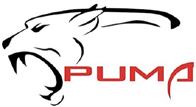
Since 2010, more than 500 000 containers and trailers have been secured by the Leopard Lock, with an average of aver 2 000 containers and trailers secured a month in Southern Africa.
Lock Specifica�ons
The Leopard Lock’s unique, patented design includes the following characteris�cs:
• Strong and robust
• Unique locking mechanism
• Disables the handle mechanism of the container at the most vulnerable spot

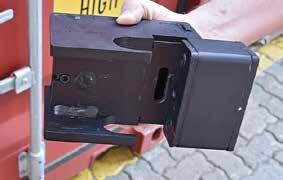
• Easy and quick to fit and remove by professional in-house teams at all strategic ports and major ci�es
• Withstands conven�onal cu�ng equipment such as hacksaws, crowbars and bolt cuters
Satellite Tracking
A Global System for Mobile communica�on (GSM)-tracking unit is fited within the lock and is protected by a unique housing system. The lock can be fited to a closed-body truck, trailer, rail wagon or sealed cargo container, enabling real-�me GSM tracking of cargo from loading point to des�na�on.
Control Centres
Leopard Locks are con�nuously monitored by dedicated tracking teams situated in secure control centres in South Africa, Tanzania and Zambia, with specialist armed reac�on teams on standby to respond to cargo the� or hijacking alerts.

Rapid Reac�on Team
A network of teams is strategically situated at key ports and loca�ons across South Africa, supported by 24/7 standby helicopter emergency services.
Peace of Mind
Leopard Lock is recommended by insurers and underwriters, with preferen�al rates available for Goods in Transit and 3rd Party Liability insurance premiums.
Cargo can be pinpointed in transit at any �me of day or night and tailored daily progress reports are available, giving clients the reassurance that cargo is being securely transported across Africa.
LEOPARD LOCK Stealth – Strength - Security
pumariskmanagement.com info@pumariskmanagement.com
PUMA
Management
IF IT’S NOT A LEOPARD LOCK, IT’S A CHEETAH!
Certification of hauliers for transportation of high-value cargo
risk in the transportation of HVC. A case in point is the N3 Highway to the Port of Durban, where arson attacks and looting of trucks carrying HVC have been reported.
Thus, cargo owners, in this context mining companies and / or LSPs, must be very circumspect by enhancing measures to safeguard their invaluable assets, and engaging certified hauliers should be a fundamental practice.
Sparing no effort
Given the challenges mining companies are facing, in a brief to Mining Business Africa, the team at DPS March pronounce their commitment to meeting the need for reliable and responsible hauliers, as they have been consistently doing in the past years.
Typically, DPS March spares no effort in carrying out rigorous steps to certify the competence and integrity of hauliers as well as the inspection and Risk Management of Transhipment Depots. All parties who bear the risk of handling the HVCs are engaged - hauliers, mining companies (owners of HVC), owners or administrators of freight forwarding companies, and insurance companies. Ultimately, they all benefit from the know-how of the seasoned DPS March team enormously.
• Competence and integrity of Hauliers
DPS March undertakes a certification process, as well as ensuring that the haulier stays compliant for the duration of the certification. The certification process covers a broad scope. Some of the areas include driver vetting and recruitment, driving in convoys, levels of experience of directors/senior managers, references from reputable clients of hauliers, and history and claims records of cargo losses arising from accidents or thefts within the last three years.
Furthermore, annually, regular verification of responsible hauliers is carried out. This is aimed at maintaining current data on a haulier’s
continued adherence and compliance to the prescribed code of security, hence, suitability to continue transporting High Value and ‘thief attractive’ Cargo.
•
Inspection and risk management of transhipment depots
Another critical step is the inspection and risk management of transhipment depots of HVC and commodities to minimise the risk of thefts or robberies. This is aimed at, amongst other things, preventing the malpractice of the surreptitious substitution and theft of containerised HVC and commodities after their loading and sealing for onward shipment, whilst leaving the shipping line seal seemingly intact. Particularly, some of the areas of focus during an inspection and risk assessment include the following:
• Inspection of physical security of depot, including perimeter walls, access/exit control points, deployment of security guards/dogs, warehouse intruder alarm systems and CCTV surveillance cameras ; and
• Daily inventories on high-value cargo; and
• Procedures to verify loaded cargo specs and quantum, as well as correct loading and security procedures; and
• Examination of access and exit control procedures for pedestrians and vehicular traffic.
Enormous benefits
Ultimately, DPS March Certification benefits all stakeholders – hauliers, cargo owners (mining companies or commodity brokers), freight forwarders and insurance companies (underwriters).

• Hauliers
Amongst others, hauliers benefit from the enhancement of reputation, potential for increased volumes of jobs/assignments, and better vetting of drivers, and adherence to tried and tested security protocols whilst in transit .
• Cargo owners
Mainly, cargo owners benefit from the easier selection of DPS March Certified Hauliers, as well as the means of verifying arriving trucks and drivers to load cargo and elimination of risk from loading bogus trucks and drivers.
• Freight forwarders/clearing agents
For Freight forwarders/clearing agents, it serves as a means of easier selection of DPS March Certified Hauliers and identifying potentially undesirable hauliers, above and beyond, ensuring greater transparency on drivers, trucks and trailers assigned by contracted hauliers, just to cite a few.
• Insurance companies/ underwriters
The value for insurance companies/underwriters is in the following areas: Easier confirmation of DPS March Certified hauliers; Means of scrutinising claims/loss record of new or existing Insured Parties; Means of verifying fleet size and registered truck and trailers of Insured Parties against those declared; and determining a benchmark for Insured Party’s qualification for premium discounts / preferential rates.
Committed to rendering effective services
In general, the team at DPS March recognise the scale of challenges that mining companies are confronted with to ensure the safety and security of their HVC in the current economic climate. And so, adequately resourced, they reiterate their commitment to rendering effective certification solutions to mitigate the risk of theft and enhancing the prospect of their HVC reaching their intended destination.
12 Mining Business Africa | July - August 2023
Shifting approaches to wire rope lubrication in South Africa
Newer lubricants include penetrating oil, used instead of grease for wire rope lubrication, as it decreases the risk of product flinging off because the oil gets deep into the core of the rope.
increasing labour costs and a greater imperative to minimise downtime has led to wire rope operators seeking long-lasting products that require less frequent applications and which contribute to safer operating conditions.
“We have seen this particularly in the mining industry, where ropes have to be well lubricated for safety purposes, but having a wire rope on a lift out of action for lubrication means people can’t get up or down into the mine. Being able to lubricate these components less frequently with a product that lasts up to three times as long is very important. Nowadays, in some instances, you can even effectively spray or lubricate a rope while it is in use,” says Ford.
Industries embracing change
Some of the key applications where there has been a shift in the lubrication used for wire ropes include platinum mines and crane operations. LE South Africa was also approached by an original wire rope equipment manufacturer to supply its Wirelife™ wire rope lubricants as the recommended solution for the OEM’s equipment.
Engineers in various industries are also beginning to rely on the technical specs that are published by companies like LE to help them select lubricants with a proven track record and the right corrosion and wear protection to increase the performance and lifespan of equipment. This is an important shift in attitudes and speaks to the increasing focus on sustainability, in terms of costs, time and more broadly, in high-intensity applications and environments.
There has been a move towards safer and more efficient application of lubrication.
The approaches to wire rope lubrication have shifted in recent years, largely due to important technological advances to improve the application and performance of lubrication products for wire ropes. Locally, Lubrication Engineers (LE) South Africa has been at the forefront of these advancements.
Issues with “old-school” lubricants
LE South Africa’s Managing Director, Colin Ford, explains that one of the bigger problems that older types of lubricants have is that they “fling off” as a result of the force that is applied when a rope goes back onto a winder or over a sheave. More durable, modern products no longer have this issue as they dry quickly and
are designed to be more adhesive, sticking to the rope better.
Ford says these newer lubricants include penetrating oil, used instead of grease for wire rope lubrication, as it decreases the risk of product flinging off because the oil gets deep into the core of the rope. “Penetrating oil is recommended to infiltrate into the core of the rope and protect it from corrosion from the inside out,” he says.
Ford explains that another of the key shifts for wire rope lubrication has been a move towards safer and more efficient application of lubrication. In the past, lubrication of wire ropes required equipment downtime as a general type of grease was applied to the ropes. However,

Improving lubrication at a prominent gold mine
In an important example of the value of using long-lasting wire rope lubricant products like Wirelife™, Wirelife™ rope lubricants were applied by LE at a renowned gold mine in early 2020.
With the subsequent arrival of the COVID-19 pandemic, maintenance access and general supply constraints because of lockdowns meant that frequent lubrication of the ropes would have been challenging. However, the initial application of the Wirelife™ rope lubricant product kept the wire ropes running smoothly for over two years and helped the mine’s operations during that difficult period for everyone around the world.
Mining Business Africa | July - August 2023 13 Wire
lubrication
rope
Turning challenges into golden opportunities
Certain gold-producing African countries are considering establishing local refineries. However, there is a risk that some may harbour a romanticised notion of the business. While the business is ‘worth its weight in gold,’ it is only through proper planning and thorough implementation that challenges could be turned into opportunities.
By Jimmy Swira
In recent years, there has been an upswing in resource nationalism in certain gold and other mineral-producing countries on the African continent, resulting in steps being taken to effect drastic changes to mining rights. The politicians driving the move posit that mining rights have been overtaken by events, and so changes are long overdue.
‘In-Country Beneficiation’
Consequently, countries are amending mining rights to ensure that they extract more value from their minerals than they currently do. One of the areas they have identified niche opportunities in is the “in-country beneficiation” of minerals, particularly in the gold refining and manufacturing of jewellery and other products. However, the main challenge is that currently, most resource-rich countries do not have local capacity in the area of gold refining, let alone conducive conditions for refining industries to flourish, with the exception of South Africa. As a result, the bulk of the gold is exported to refineries overseas, which, in effect, is “offshoring” the refinery industry.
For this reason, the countries are aiming for the gold to be refined locally. Some of the options they are exploring are the establishment of state-owned entities or outfits in which the state has a controlling stake.
While the fervour in countries is admirable, one would ask: What would it take to establish a sustainable gold refinery in Africa?
Project Viability
Two specialists are eager to share their views with Mining Business Africa on the viability of a refinery in Africa. Their views are gathered from a combined experience of over fifty years in the gold refinery business.
Chris Horsley is a consultant to high-profile organisations in the gold sector, who previously served as Executive Head: Technical and Advisory, amongst other positions, at Rand Refinery for more than two decades. On the other hand, Vic Hills is the Principal Consultant at V W Hills Mineral Processing Consulting CC, Cape Town.
Not a new discussion
First of all, before delving into the matter, Hills draws attention to the fact that the discussion on “in-country” beneficiation is not new in Africa’s gold mining and refining industries. “In-country
beneficiation has been talked about for about the last twenty-five years, particularly in West Africa, which is now the most prominent gold-producing region in Africa,” he says, adding that he hopes to see new ventures succeeding through meticulous planning and sound implementation.

Scrupulous Planning and Implementation
Relating to meticulous planning and sound implementation, Horsley mentions the following important areas: a Comprehensive feasibility study; Plant design, and the optimising of operations for specified inputs and outputs and for a robust metal accounting methodology; and the need for responsible upstream and downstream supply chains.
1. Feasibility Study
The primary step in a feasibility study is to be thoroughly versed in the regulations governing the global gold refining business and how the planned refinery will navigate as a new entity. “Mining companies have to understand the most important aspects of this notion of upgrading newly mined gold or secondary gold to a beneficiated product. Mainly, the product must be able to be sold into the international gold market to realise the inherent value of the gold
Gold processing -in-country beneficiation
Al Etihad Gold Refinery in Dubai
May - June 2023
for investment and monetary trade. And for this to happen, the gold must be accredited by the recognised exchanges and certifying bodies in the market. Typically, these are centred in London, Shanghai, Singapore, Tokyo, Dubai and New York, to name some of them,” Horsley points out.
So, even gold that is refined “in-country” to a purity of at least 99.50% will need to be re-refined by a refinery that has accreditation to a body like the LBMA (London Bullion Market Association) or the DMCC (Dubai Multi Commodities Centre). Without this accreditation, the gold cannot be traded on the international market and thereby realise its full value in monetary terms.
Unfortunately, this is often a step that governments overlook in their drive to establish a gold refinery in their respective countries. Besides basic regulations, Horsley tells mines to be aware of the following information before embarking on a project:
• The location, size, and shape of the desired market for refined gold, for example is the gold to be used for local jewellery manufacture or exported into the international market
• On a global basis, gold refining capacity far exceeds the supply of newly mined and secondary gold input.
• The size and capacity of the refinery that is to be established.
• The type of gold that is to be refined, e.g., newly mined gold, artisanal gold, secondary material, or gold scrap.
• The volume of gold of each type that is to be treated.
• The characteristics and nature of the gold supply chain to the refinery and after the gold has been refined.
• The weighing, sampling, and assaying of the incoming gold, in-process materials, and final products. The methodology used is very important.
2. Design
After a thorough feasibility study has been carried out, a crucial step is designing a refinery that operates efficiently, cost-effectively, and is environmentally friendly. The adage: “Look before you leap may” sound like a cliché, but it is as relevant as ever. Particularly, Horsley brings attention to the following realities:
• Financially, the actual refining step is financially very marginal. Revenue incentives are found in the degree of “value-add” to the refined gold.

• The disposal methodology of the final effluent streams (gaseous, liquid) from the refining process is vital. Residual gold can be entrained in these streams.
• One of the most critical steps in the design of the plant is the control of the metal balance across the process, efficiencies of >99.98% are necessary.
• It is necessary to minimise the work-inprogress gold inventory and the time it takes to refine the incoming gold. Control of the inventory is a necessary part of managing the metal balance.
3.
Optimising Output
Last but not least, the bottom line in any refinery is to efficiently maximise the output. The convoluted part is how to put a handle on this task. While there may be numerous approaches to optimising operations to meet the desired
output levels, Horsley suggests the following steps: Minimising the gold inventory pipeline; Keeping process efficiencies close to 100%; and processing incoming gold as fast as possible so that it can be dispatched to the customer quickly. Furthermore, the use of suitable technologies is central to the successful operation of refineries. Thanks to advances in research and development, there are several innovations at the disposal of refinery asset owners. Among the available technologies that can be adopted, Horsley suggests Miller Chlorination for larger volumes, as well as wet chemical processes for smaller volumes and easier process control.
4. 4. Responsible upstream and downstream supply chains
Last but not least, refiners are strongly advised to understand and take steps to comply with the appropriate standards and guidelines issued by amongst others, the LBMA, OECD, DMCC and the World Gold Council.
Encouraging success
By and large, Hills hopes plans by certain countries to establish sustainable refineries bear fruit. He is encouraged by African countries that have implemented the above-mentioned steps thoroughly. The established refineries can produce gold bars and other products of 9950 fineness and above. This gold is used by jewellery manufacturers to produce their wares, coin, medallion manufacturers and others who use the gold for various decorative and industrial purposes. “Hopefully, the models of those successful ventures are being replicated in other countries. However, enhanced proper prior due diligence is critical, and then challenges can be turned into golden opportunities.”

Mining Business Africa | May - June 2023 15
Drone-based photogrammetry for underground mining environments
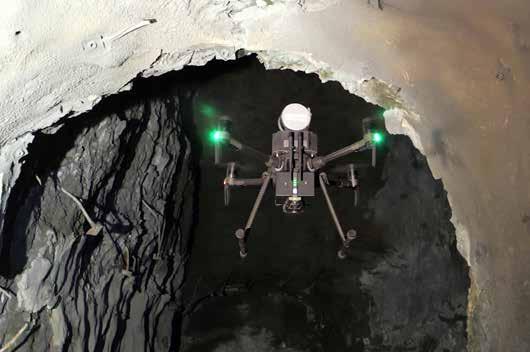
Efficient Inspection, Enhanced Safety
By eliminating the involvement of humans (employees), the deployment of drones in underground inspection enhances safety and improves efficiency. Using reliable tools such as LiDAR and SLAM, drones can obtain high-quality images that help mine managers make informed decisions.
obtained are relevant and reliable, as dronebased surveying solutions providers recently told this publication.
A necessity
The significance of drones becomes better comprehended when the myriad of challenges that businesses face in the contemporary operating environment. The challenges can be narrowed down to the twin objectives of onerous compliance requirements (ESG, Occupational Health and Safety in the main), above and beyond ensuring the long-term sustainability of a business.
The surefire way they can meet the abovementioned objectives and prevail is through digitising workflow and operations to enhance efficiency and reduce environmental footprint (emissions), removing or minimising as many as possible humans from hazardous situations. Concerning inspection, the ready availability of advanced drone technology has become a lowhanging fruit right within their grasp.
By Nick Barnes
In mining jurisdictions throughout the continent, recent changes in legislation governing health and safety indicate that authorities (regulators) have assumed a zero-tolerance stance toward safety breaches in mining. Ideally, this obligates mining companies to comply at all costs. However, in reality, unavoidably, there are some areas where mining companies might lack capacity, rendering them vulnerable to high levels of safety risks and potential breaches.
Interestingly, the passing of stringent legislation has coincided with the exponential advancement of a wide spectrum of technologies. The use of some of the technologies has significantly lightened the burden on mining companies of meeting compliance requirements.
Removing human involvement
Mainly, technology has enabled mining companies to remove human involvement in some critical functions, minimising safety risks.
On the whole, the exploration of drone technology can help meet the objective of enhancing safety and improving efficiency in underground mining operations. This task would be difficult to accomplish by assigning employees. Conventionally, these tasks have involved the physical presence of employees.
Drones in underground surveying One of the innovations that is having a groundbreaking impact is drone technology. Among a host of other fields, the versatility of drone technology has revolutionalised how surveys of underground mining environments are performed. These are areas such as stopes and voids, mine shafts and abandoned declines, as well as potentially harmful environments that arise from post-blast situations.
Typically, when conducting surveys in underground environments, inherent risks, deploying employees poses a big dilemma. As an alternative, handily, when deployed properly, drones perform the duty capably in rugged duties. They eliminate the concern of the risk of harm or injuries to workers while acquiring vital data in high-wall precision scanning. And the results, in terms of the volumes of images
LiDAR and SLAM enhance dronebased inspection
Global positioning systems have limited scope in some areas of the underground environment. Handily, as alternatives, simultaneous localisation and mapping (SLAM) and light detection and ranging (LiDAR) technologies have opened up new opportunities. Based on results from recent surveys conducted in African mining, LiDAR and SLAM drones can produce high-resolution images of their high-value, mission-critical assets. Vitally, clients can visualise and map inaccessible areas. The data computed from the images help mining houses make informed decisions on their assets.
16 Mining Business Africa | July - August 2023
A drone on duty in an underground mine (Image: Sandvic Group)
Customised Mining-Specific Turnkey Laboratory Development
Lablink Africa is a South African-based, African-focused provider of Customised Turnkey Laboratory Development Solutions to organisations in mining and other sectors. Previous experience in Africa gives the company the edge to meet the needs of existing and prospective clients involved in Africa.
Currently, several exploration and mining projects are being launched in Africa. Reliable assaying and analysis are one of the services being core to their successful implementation. Continuous monitoring of both the performance and environmental effects of mines requires well designed laboratory services.
Opportunities
The projects have created opportunities for providers of laboratory solutions to render their services. And as expected, the service providers are appreciating the involvement for development.

Additionally, Dr Wesley Feldmann, Managing Director of Lablink Africa, is urging providers to be well-equipped to effectively serve the needs of their existing and prospective clients. “Effective laboratories that are fit for purpose, require a combination of the correct equipment and a team of well-trained staff trained to be both confident and competent to make the laboratory a continued success”.
Prudence in partner selection
Thus, service providers have to be prudent when choosing companies, they partner with in
the planning and implementation of laboratory development projects. The importance of engaging a company with a proven track record does not have to be overstressed.
Well-resourced and functional Feldmann ensures mining-specific laboratory service providers are well-resourced and functional. Lablink Africa goes the extra mile to deliver customised turnkey solutions for their respective laboratory development projects. Particularly, he attributes the company’s success in recent projects to its approach to meeting client-specific needs through the customisation and flexibility of solutions, and dedication to high-quality standards in results.
Turnkey laboratory development solutions
Lablink Africa provides turnkey solutions for laboratory development projects within Africa. It works to provide and support all aspects of a laboratory, including:
• Floorplan and workflow design
• Utility considerations

• Equipment and instrumentation supply
• Installation and training
• Method validation and accreditation
consultancy
• Continuous supply of reagents and consumables
All the above are important considerations and steps that result in a fully functional laboratory. In the end, the completed laboratory will be able to produce high-quality results for decision-making in the mining and environmental sectors.
Regarding the fine details that a typical turnkey solution requires, Feldmann explains: “Lablink Africa works on such projects in partnership with the organisation (public and private) implementing clear communication, education and understanding, ensuring the resultant laboratories are fit for purpose. A welldesigned and effective laboratory, producing high-quality results, ensures integration into the industry value chain to meet both import and export requirements, as well as environmental regulations. Once a laboratory is set up, Lablink Africa offers continued supply and support for effective operation, with shortened lead times for consumables and frequently used items.”
Customising a client-specific solution
It is worth noting that every client has unique needs. So, Lablink tailors a turnkey solution to
Mining Business Africa | July - August 2023 17 Laboratory development for african mining projects
Equipment and instrumentation supply
Laboratory Development For African Mining Projects
of African countries and have gained knowledge and experience with operational challenges that are frequently faced. These have been overcome with effective local partnerships leading to solutions, ensuring laboratories operate uninterrupted and efficiently.”
Meeting expected quality standards
Tapping into the depth of experience of its employees at the management and operational level, Lablink Africa is devoted to meeting optimal quality standards at every level of laboratory management. Feldmann regards this as pivotal for laboratory development projects in Africa. He underscores the company’s commitment: “As standard practice, laboratories are required to produce high-quality results, and these are important for effective and reliable decision-making within the mining and environmental sectors. A variety of prerequisites need to be met for a laboratory to produce highquality results and Lablink Africa provides the best solutions to fulfil these prerequisites.”
suit these needs. Specifically, the development and subsequent operation of a laboratory is a partnership between the organisation requiring a laboratory and Lablink Africa.
Lablink works together with the client from the planning of the project to ensure clear communication and understanding of all aspects required to make the project and laboratory a success. Accordingly, regular updates are central to keeping all aspects on track and implemented effectively. The communication process involved is extensive, which includes management personnel, the laboratory staff and everyone in between.
Feldmann cites the depth and extensive know-how of Lablink’s personnel as the most invaluable asset in efficient project delivery. He highlights that project success comes from Lablink Africa’s staff’s experience and expertise to handle complex projects for the client.

The education of Lablink’s core members is at a PhD level, along with experience in the industry, giving extra confidence and ensuring the correct solution is offered and discussed with the customer. Additionally, it has developed a network of experts, both from industry and academia that offer support to any unforeseen and unique issues that may be encountered. This high level of support and troubleshooting expertise for all aspects of laboratory work, ensures laboratories are never left in the dark or without a solution.
In addition, Feldmann mentions an immense plus for the client in engaging Lablink is the confidence of working with a company experienced in laboratory projects specific to Africa. “We have the experience working both in and with laboratories, for successful development, operation and accreditation. We have travelled and worked within a wide scope
Lablink Africa follows a thorough process to ensure that laboratories achieve the expected quality of results. This includes the choice and selection of equipment and instrumentation, the implementation of quality control measures, staff training and ongoing support and aftersales services.
Fundamentally, the choice and selection of equipment and instrumentation that is fit for purpose is critical to the laboratory’s success, as well as an important financial consideration. Ultimately, the correct instrumentation ensures the results meet the expected quality standards and can be used by the industry at large.
Important considerations in selection include limits of detection and quantification, accuracy and precision, turnaround time and cost of analysis. A growing trend is investment into automated equipment for increased accuracy and precision with reduced error, over and above the cost-effectiveness.

Lablink Africa recognises the importance of informed product selection in laboratory development. This is because the results inform the clients decision making. Lablink Africa advises on the equipment and instrumentation selection and works closely with high-quality and reputable manufacturer brands. In this way, they ensure laboratories are outfitted with the best options to produce high-quality and reliable results.
Apart from the laboratory hardware, quality control procedures and the quality management system need to be set up correctly. Additionally, the staff must be well-trained to work effectively to produce high-quality results. Concerning staff training, Lablink has the experience and expertise to offer both in-person and remote training, above and beyond support services. The support services ensure that the laboratory has access to assistance and guidance.
18 Mining Business Africa | July - August 2023
Equipment installation and training are part of the package
Floorplan and workflow design is part of turnkey solutions provided
Succinctly, Lablink has worked in a variety of African countries and has built up a broad wealth of experience to ensure all the aspects of work are covered, including:
• Instrumental operation and troubleshooting
• Implementation of quality control procedures
• Implementation of a quality management system
• Results evaluation and reporting
Notable milestones
So far, Lablink Africa is scaling notable milestones in African countries in both turnkey laboratory development and the provision of laboratory services. The company has successfully delivered turnkey laboratory development solutions to clients and is committed to continuously building its portfolio. Recently, the company has successfully developed and accredited a laboratory in Malawi, as a complete project. This work has led to further laboratory development projects in Nigeria and Rwanda, which are currently underway and will be completed before yearend.
Besides the provision of turnkey laboratory development project solutions, as a growing

company, Lablink Africa is actively building a customer base across the Sub-Saharan region. Feldmann explains that this is aimed at meeting the needs for quality laboratory services in industries such as mining and environmental services. “Access to laboratory services leads to improvement, development, and growth over time in industries. We are committed to providing the best laboratory services and solutions to organisations.”
Lablink Africa is working throughout subSaharan Africa, particularly in the DRC and Tanzania, to supply and service laboratories in the mining and environmental sectors.Feldmann recaps the company’s commitment to meeting the need for relevant solutions in turnkey laboratory development: “We are well-resourced and ever ready to handle projects within Africa. We thrive in tailoring unique solutions for our clientele needs.”
For more information, contact us at: Email: info@lablinkafrica.co.za Tel: +27 73 999 7605 Website: www. lablinkafrica.co.za
Keeping Abreast
Lablink Africa spares no effort to ensure that its services meet contemporary industry expectations and standards. Mainly, this is through the adoption of technologies that allow for automation and staying abreast of contemporary quality standards.
• Automation
Laboratory technology is constantly developing, with a focus on automation within all laboratory processes. This includes processes such as sample preparation, extraction and analysis, which can often be linked into a continuous process with minimal input from an operator.
Lablink Africa recognises the central role of automation in enhancing the efficiency of laboratories. And so, it has embraced it as pivotal to its operations. “Automation has the advantages of reduced error, leading to higher quality results, decreased turnaround times, and lower cost of analysis. Lablink Africa works with a variety of manufacturers that offer automation options and makes effective use of this advantage to offer laboratories the best solutions for their specific requirements.”
• Quality Assurance
Lablink Africa is committed to adopting new standards that can improve quality assurance. “Laboratory work is standardised in a variety of different ways to ensure results are standardised at a global level. ISO 17025 covers the operational considerations for a laboratory in terms of technical, quality, business, and management systems. This is important to give confidence to the mining and environmental industries for the quality, accuracy, and reliability of the results produced by the laboratory.”
Lablink Africa offers consultancy services to guide laboratory management and staff through the ISO 17025 requirements and ensures readiness for the mandatory audit. With the continuous improvement and development of instrumentation, methods are updated to take advantage of these improvements. So, Lablink Africa keeps up to date with all published methods and literature from international standard organisations, such as ISO (International Organization for Standardization), AMIS (African Mineral Standards), and CEN (European Committee for Standardization).

Mining Business Africa | July - August 2023 19
A partnership set to transform mining with AIoT
“The Smart Conveyor is the future of idler roller monitoring, utilising cloud-based temperature sensors to identify problem areas along the conveyor belts. The alarm system eliminates the need for manual problem identification and provides instant location detection. Furthermore, it can reduce unplanned maintenance, thus increasing the asset availability in the mining operation.”
Smart
Bosch Rexroth Smart Mine (Smart Mine) has joined the Bosch Rexroth Africa Group to revolutionise the mining industry with innovative Artificial Intelligence of Things (AIoT) solutions. These include Smart Conveyor, Stop-Start Retrofit, Smart Inspection, and Smart Lockout, all of which aim to optimise mining operations and promote sustainable business practices.
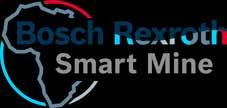
Jonas Corali, General Manager of Smart Mine, will be responsible for driving the mission and vision of the company. Other key personnel
include Eddie Kleingeld, Regional Sales and Business Development Engineer, and Rodrigo Conte, Project Manager. The team also includes field engineers: Sifiso Shange, Themba Nyathi and Tshanduko Matshusa. The latter two were graduates of the Yes4Youth Programme, a government-business collaboration that seeks to reduce youth unemployment in South Africa.
Corali discusses how Smart Mine is committed to delivering cutting-edge solutions to the mining industry, driving growth across the African continent:
Smart Mine’s history in South Africa
Smart Mine previously operated primarily in Brazil and Chile in South America until it landed its first South African deal in 2019. The company later joined the Robert Bosch brand and is now a fully fledged South African company that falls under Tectra Automation in the Bosch Rexroth Africa Group.
“Our mission is to provide AIoT mining solutions that promote sustainability, future readiness, and business growth through digital transformation,” Corali said. “Our solutions have

20 Mining Business Africa | July - August 2023
Conveyor is highly scalable, allowing up to 5 000 sensors per kilometre on a conveyor.
Conveyor Digitisation For Mining Projects
Smart Mine strategically bolsters the Group’s services to the mining industry by offering cutting-edge, AIoT-based solutions, driving growth across the African continent.

Smart Mine’s Solutions, Smart Lockout, Smart Conveyor, Stop-Start Retrofit, and Smart Inspection, aim to optimise mining operations and promote sustainable business practices.

Smart Conveyor
Maximise conveyor system efficiency with Smart Conveyor by Bosch Rexroth Smart Mine. Prevent downtime and reduce maintenance costs.
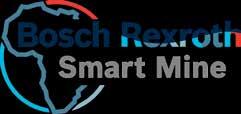
Smart Lockout System
Smart Lockout from Bosch Rexroth Smart Mine ensures personnel safety during machine and equipment repairs and maintenance.

Smart Inspection Application

Smart Inspection from Bosch Rexroth Smart Mine is a customisable web-based application that streamlines inspection processes.
Stop-Start Retrofit
Boost your mining efficiency with Bosch Rexroth Smart Mine's Stop-Start Retrofit. Cut fuel use and emissions while enhancing productivity.
 BOSCH REXROTH SMART MINE
BOSCH REXROTH SMART MINE
+27 11 971 9400
Conveyor Digitisation For Mining Projects
already shown a significant return on investment for both Smart Mine and our clients.”
Mining industry solutions
“Safety and efficiency are top priorities in mining, and our innovative solutions can help businesses achieve streamlined processes. Our Smart Conveyor is the future of idler roller monitoring, utilising cloud-based temperature sensors to identify problem areas along the conveyor belts. The alarm system eliminates the need for manual problem identification and provides instant location detection. Furthermore, it can reduce unplanned maintenance, thus increasing the asset availability in the mining operation,” said Corali.
Smart Conveyor is the most scalable conveyor belt monitoring system available, allowing up to 5 000 sensors per kilometre. It is currently used in three locations in South Africa and is also suitable for various industries such
as cement, logistics, sugar, and paper.
Installed on heavy-duty mine equipment, the Stop-Start Retrofit solution detects lack of motion, and stops the engine. It plays an imperative role in reducing CO2 emissions and supports a mine’s decarbonisation goals.
Smart Inspection and Smart Lockout are two other solutions offered by the company. Smart Inspection is a locally developed, web app-based system that streamlines inspection processes, eliminates paper-based forms, and reduces errors. It is customisable to meet each business’ specific needs.
Smart Lockout supports on the isolation energy process in specific areas for any asset maintenance, which is often located at a distance from the energy source. The solution ensures the safety of workers by preventing the accidental startup of machinery during maintenance or repair work, reducing the risk of accidents and injuries.
Smart Mine highlights
Smart Mine has experienced some remarkable milestones since inception, but one achievement stands out. Despite facing the challenges posed by the COVID-19 pandemic, its first Smart Conveyor solution was installed in Africa when the virus was at its most rampant. “It was a challenging time,” says Corali, “but we pushed forward with our mission to revolutionise the mining industry with our cutting-edge technology and great results have been achieved to date.”
“The installation of this ground-breaking technology was a true highlight and it presented an opportunity to showcase the incredible capabilities of our innovation,” Corali points out. “Smart Conveyor’s remote monitoring capabilities proved invaluable when site access was difficult, ensuring successful mining and minimised risks.”
“Subsequently, there has been an influx of enquiries and interest from potential clients. The success of Smart Conveyor has proven to be a game-changer for the mining industry,” Corali added.
Smart Mine benefits
AIoT enables secure and transparent data sharing, enhances efficiency, reduces costs, and improves safety in the mining process. It also enables the tracking and tracing of materials, promoting responsible sourcing and sustainability. Smart Mine’s innovative solutions benefit the wider community and environment, reinforcing Bosch Rexroth Africa’s commitment to sustainable economic growth.
Bosch Rexroth Africa is committed to the digital transformation of the mining industry by supplying it with the best cutting-edge solutions on the market.


22 Mining Business Africa | July - August 2023
Bosch Rexroth Smart Mine also offers Smart Inspection and Smart Lockout. Smart Inspection is a customisable web app that simplifies inspections, reduces errors, and eliminates paper forms. Smart Lockout guarantees worker safety during maintenance by preventing accidental machine startup.
Installed on heavy-duty mine equipment, Stop-Start Retrofit detects a lack of motion and stops the engine.
Low Emission Valves, Compliant and Safe Piping Systems

As low-fugitive emission valves are used in critical applications, it is important to select products with correct specifications. And so, AZ-Armaturen South Africa (Pty) Ltd advises mining companies to be discreet in the product selection of Low-fugitive emission valves.
Mining companies are obligated to comply with legislation to reduce emissions in their operations from pit to port. To achieve this, they should explore every available avenue. Relating to piping systems, one of the common problem areas is uncontrolled leaks of gas or vapours.
This is an area where special low fugitive emissions valves are utilised to eliminate fugitive emissions. Nonetheless, things do not always go according to plan as mining pipes handle corrosive and abrasive substances. Unfortunately, failure can occur when least expected, usually at a huge cost. This is in the form of potential breaches of regulation in case of over-the-limit emissions, accidents due to exposure to fumes or explosions, above and beyond downtime and expenses on fixing the problem.
Discreet production selection
Concerned about how poor choice of lowfugitive emissions impacts operations, Application Engineers at AZ-Armaturen South Africa (Pty) Ltd tells mining companies to be prudent in product selection. “Low-fugitive emission valves are used in critical applications and it is important that products with correct specifications are selected,” they say in response to Mining Business Africa
Engineered for rugged requirements
Low emissions fugitive valves should be engineered to handle rugged requirements of mining-specific piping systems, the application engineers say, demonstrating AZ-Armaturen’s approach to designs, customising products to operational conditions, materials of construction, and adherence to quality standards.

1. The design
Regarding the design of plug valves and related equipment, the emphasis is on the following characteristics:

• Free of cavities
• Maintenance free
• Self-lubricating
• Mounting-flange for actuators acc. to DIN ISO 5211
• Easily accessible adjustment of the plug, even with a mounted actuator
• Vacuum tight
• Fugitive emission certified, resp. German Clean Air Act (TA-Luft 2002 approval)
• Certified according to Directive 2014/68/EU
• Firesafe design API 607 / ISO 10497
Mining Business Africa | July - August 2023 23 Low Fugitive Emissions Valves For
Projects
Mining
The popularity of AZ-Armaturen’s low-emission valves pivots around quality
Low Fugitive Emissions Valves for Mining Projects
2. The operational conditions
The operational conditions can be in the following parameters for a plug valve for fluctuating temperatures:
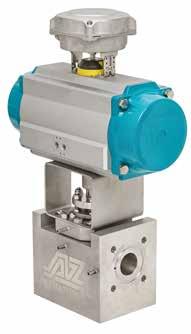


Firesafe DIN-EN:
• DN 15 – 600
• PN 10 – 40
ASME:
• NPS ½“– 24“
• Class 150 – 300
PT range:
• -30 < T < 230/280°C
• Vacuum 10-8 mbar.
3. The material of construction used
The nature of some liquids or solids can accelerate the wear of valves. Thanks to tons of experience gathered from and investment in continuous product research and development, AZ-Armaturen South Africa (Pty) Ltd has built a reputation as an expert in “3D media”: Dirty, Difficult, and Dangerous.
“Depending on the media, the pressure and the temperature combination of the application, the right combination of standards materials for the body and the plug, as well as the sealing materials are chosen by the client´s process expert,” explain the Application Engineers.
Typical standard body materials include:
Carbon Steel 1.0619, ASTM A216 WCB
Stainless Steel 1.4408, ASTM A351 CF8M
Stainless Steel 1.4308, ASTM A351 CF8
Unalloyed stainless-steel casting (low Temp.)
1.1138
LCC/LCB/A352
The standard plug materials include:
Stainless Steel 1.4408, ASTM A351 CF8M
Stainless Steel 1.4308, ASTM A351 CF8
Available special materials, with which the company is also familiar, are:
• Ductile cast iron EN-JS1049, ASTM Gr 60-40-18 / A395
• Alloy
• Monel
• Nickel
• Zirconium
• Titan
• Tantalum and other materials on request according to the application
4. Adherence to quality standards
The popularity of AZ-Armaturen’s low-emission valves pivots around quality. The FSN-sealing range for Low-Emission-Valves is certified and classified according to ISO 15848-1 and API 641.
High-quality standard is evident in two sealing systems for the low emission range:
• Firesafe safety sealing (API 607) Type FSN for fluctuating temperatures with 3x graphite packing (adjustable) for additional stem sealing; Tmax 280°C
• Firesafe safety sealing (API 607) Type FSN-SL for fluctuating temperatures with 3x graphite packing (live loaded disc springs) for additional stem sealing; Tmax 280°C.

Industry endorsement
Low-emissions valves have been endorsed by the industry. Thus, far, there has been positive feedback from clients on their experience of switching to AZ-Armaturen low-fugitive emissions valve brands. “A multitude of miningrelated industries and large players in the mining industry itself relies on our valves and have hundreds installed. Due to discretion, we cannot disclose them in detail. However, there are several SA Industry heavyweights included.”
Tapping into close to 40 years experience
AZ-Armaturen South Africa (Pty) Ltd is the only local manufacturer of this type of industrial valve in Southern Africa. The company manufactures valves, strainers, check valves, and pressure-free sampling systems for the local industry for close to 40 years.
AZ-Armaturen also offers refurbishment of valves. Refurbishment of valves can usually be done in a short time and at a very competitive price compared to a new valve. Its workshop is fully equipped with the required experts and machinery. Even more, it also features a large stock level, which allows short turnaround time for a multitude of valves.

24 Mining Business Africa | July - August 2023
Industry endorsement AZ-Armaturen low-fugitive valves have been endorsed by the industry
free of cavities & maintenance
Product range
Plug Valves with PTFE-sleeve
two-way and multi-way valves
HIGH PERFORMANCE valves for processes with demanding requirements

Valves with PFA / FEP lining full safety for operator and environment
Sampling systems
safe, representative, reliable
Control plug valves precise equal percentage or linear control
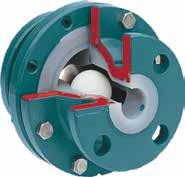
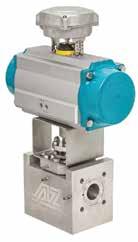



Piping accessories
metallic or with PFA / FEP lining, lined strainers, lined ball check valves, lined sightglasses

Actuation aligned, verified and tested components
Special solutions
customized plug valves made of cast and forged special materials
ARMATUREN
AZ Sealing System Solutions for a cleaner and safer environment According to ISO 15848, TA-Luft and API 641 (German standard) Local for local - Local manufacturer since 1985 www.az-armaturen.co.za AZ-Armaturen South Africa (Pty) Ltd 28 Derick Coetzee Street, Jet Park Ext. 20, Boksburg, 1459 Email: info@az-armaturen.co.za Contact Number: +27 (0) 11 397 3665 engineered. fast. dynamic.
Low-Emission Plug Valves
Fugitive Emissions
Prefabricated Electric Substations (E-Houses) For Mining Projects
Fast, Cost-effective, and Customisable
TGOOD Africa has built a reputation as one of the world’s leading providers of prefabricated E-House solutions, as well as power transmission and distribution equipment to clientele in different industries. The company sees growth of opportunities in the supply of prefabricated E-House solutions to mining projects in Africa.
Largest Utility EHouse substation in Africa, - Fleurhof 88/11kV substation under construction for City Power of Johannesburg
Underlining their unflagging confidence in economic conditions, mining companies are undertaking Greenfield and Brownfield projects in different regions in Africa. Doubtless, one of the critical requirements in the project is reliable power supply.
Consequently, to ensure the reliable supply of power to mining sites, one of the essential equipment needed is substations. Nevertheless, the main challenge is that the traditional electrical high-voltage and medium-voltage brick-and-mortar substations may not meet the urgent need due to their limitations.
Noticeably, prefabricated electric substations (E-Houses) have emerged as a more viable alternative to traditional substations. Kobus Coetzer, the Chief Executive Officer of TGOOD Africa, has been observing the trend keenly. He foresees the niche of prefabricated E-Houses
(Electrical Houses) continuously growing, as increasingly, organisations in different industries appreciate how their features address the common challenges encountered with traditional substations.
Challenges with traditional substations
Due to their nature, traditional substations cannot adequately cope with the pace of infrastructure development, as urbanisation continues to increase, as well as the obligation for businesses to reduce their environmental footprint.
Concerning urbanisation, Coetzer elaborates: “As urbanisation continues to increase, the power infrastructure needs to be expanded as well. Unfortunately, the traditional electrical high-voltage and medium-voltage
brick-and-mortar substations that utilise airinsulated switchgear and large pieces of land are expensive to build and take a long time to construct.”
For mining companies, the location in remote areas compounds the inherent challenges of deploying traditional substations. More often than not, they have to contend with raw materials, skills, labour, logistics etc., which increase the capital expenditure of a project.

Benefits of Prefabricated Structures
As an alternative to traditional substations, E-houses that utilise gas-insulated switch gears are becoming an increasingly attractive solution, especially in overcrowded cities where land is not freely available and is expensive. This is because E-houses come pre-engineered and pre-fabricated according to customer
26 Mining Business Africa | July - August 2023
E-House delivered to the City of Johannesburg

Markedly, due to their prefabricated modular components, E-Houses have revolutionised the electrical substation construction industry by offering a host of benefits including:

• They provide a fast, cost-effective, and customisable solution to distribute power quickly and reliably. Hence, they can be easily installed and commissioned significantly faster than other traditional substation designs. Eventually, this reduces the overhead costs associated with substation construction, such as engineering, design, and labour.
• Their prefabricated components are modular. This allows them to be easily reconfigured and updated with changing needs.
• They provide increased safety for
The World Leader in E-Houses
When it comes to prefabricated substations, TGOOD is the world leader in prefabricated E-House solutions and power transmission and distribution equipment. As a vertically integrated solution provider, TGOOD designs and manufactures IEC-certified MV and HV electrical switchgear and is, therefore, able to offer a high-value solution at a very competitive cost.
TGOOD has built a reputation for a quick turnaround in meeting the customer’s needs. What’s more, the company’s electric power distribution solutions can be delivered at EXCEPTIONALLY SHORT lead times by assembling all equipment and buildings, including FAT and pre-commissioning, in its factory.
However, Coetzer clarifies that TGOOD is aware that it is one thing to deliver a basic solution, and a different kind of a beast to deliver a product that suits the client’s particular need. So, the process of customising solutions entails scrupulous planning. Basically, the following factors are considered:
• Security: Ensure that the E-House is designed with adequate security features to ensure that unauthorised access can be prevented.
• Cost: Consider the costs associated with the design and implementation of the E-House, as well as any ongoing costs associated with the maintenance of the system.
• Safety: Some but not all factors that relate to safety that should be considered are:
personnel and flexibility with regard to system configuration.
• Last but not least, E-Houses provide a much lower environmental impact due to their modular, transportable design that can be quickly delivered and installed with minimal disturbance to the environment. “This has been especially advantageous for remote mining operations, making the construction process much easier and more efficient,” explains Coetzer.
Research and Development
On the whole, it is not surprising that due to the above-mentioned benefits, E-houses have revolutionised the electrical substation construction industry. With ongoing Research and Development initiatives, certainly, new designs will offer a wider array of benefits.
• Proper installation of the switchgear
• Adequate clearance from electrical components and other potentially hazardous materials.
• Isolation of any live parts.
• Proper grounding and earthing of the equipment and E-House
• Use of fireproofing materials to obtain a two-hour fire rating.
• Proper labelling of the equipment
• Regular maintenance of the switchgear
• Adequate ventilation to prevent the build-up of heat and fumes.
• Emergency trip switch in an accessible location.
• Arc venting of switchgear installed in the E-House
Mining Business Africa | July - August 2023 27
E-House delivered in Mozambique
requirements and specifications.


Circular Polarised Antennas For Underground Tunnel Communications
Versatile antennas, Effective Radio Communications
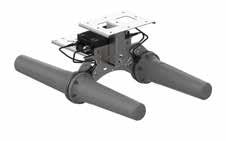
Poynting is the provider of robust Circular Polarised antennas to clients in various industries. The company is well-resourced, vastly experienced and is an excellent position to design solutions to challenges that mining companies often encounter underground with the failure of radio communications due to poor signal transmission in tunnels.
Currently, there are increased activities in the underground mining environment. In some cases, the underground tunnel infrastructure stretches over many kilometres or miles even hundreds of kilometres or miles. In this harsh and unforgiving environment, effective radio communication can enable mining companies to operate safely, environmentally friendly and productively. In order to meet these requirements of effective communication, reliable equipment is of paramount importance.
Need for effective radio communications
Radio communication is one of the most important platforms to enable the flow of critical information in underground tunnels. Given this, the team at Poynting Antennas and Inteto Connect can assist Mining Companies in the choice of equipment, particularly the antennas the Mining Company needs to deploy to maximise radio communication capabilities underground.

30 Mining Business Africa | July - August 2023
Circular Polarised antennas have proven to be much more effective than conventional, unipolarised antennas
Significance of informed choice
The significance of an informed choice in critical components for radio communication cannot be overemphasised, especially concerning antennas. This is considered as one of the most common challenges encountered in radio communications, the failure of conventional antennas to deliver reliable data to ensure personnel safety and maximise productivity whilst protecting the underground environment.
Operational challenges
In many cases, antenna failure in radio communications can lead to the following operational challenges: costly downtime to key processes, escalation of safety risks, and, in some cases, breaches of environmental regulations.
Circular Polarised antennas
Circular Polarised antennas have proven to be much more effective than conventional, unipolarised antennas, covering greater distances underground with higher reliability as well as higher data throughput.

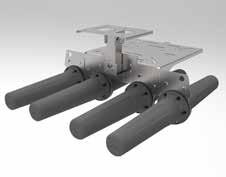
In a product brief to mining companies and contractors through Mining Business Africa, Poynting’s ‘Business Development Expert, Pieter Prinsloo, first highlights the shortcoming of Conventional antennas, then how the versatility of Circular Polarised antennas offers muchneeded convenience as an option.
The
shortcoming of ‘conventional’
antennas
Prinsloo points out that the uni-polarised nature of conventional antennas is their major shortcoming. “Conventional antennas’ are Uni-Polarised, for example, either Vertical or Horizontally. Due to this ‘uni-Polarised’ nature, the Electromagnetic Wave ‘distribution’ in the tunnel is only in one or the other of either Vertical or Horizontal Polarization causing non-optimal reception- and/or transmission in the crosssectional area of the tunnel,” he points out.
Due to this shortcoming of poor coverage, conventional antennas require a lot more antennas to achieve the required ‘signal level’ or ‘coverage’ in all parts of the tunnel. Since these antennas are attached to the Radio equipment, naturally, this means that a lot more Radios need to be deployed to achieve the desired coverage. In the end, this increases the cost of underground radio communication drastically.
Advantages of using Circular Polarised antennas underground
Instead, as an alternative, Circular Polarised antennas achieve maximum coverage of the cross-section of the tunnel through Circular Polarization. With ‘Circular Polarization’ the tunnel acts as a ‘Waveguide’ for the rotating
(Circularly Polarised) Electromagnetic Wave. In the process, it creates a far better signal distribution in a far larger cross-section of the tunnel over a further distance. This results in much better reception and transmission of the data over a far greater distance creating a reliable, fast and cost-effective radio communication system.
Prinsloo expounds how the ‘Circular Polarised’ electromagnetic wave enhances signals: “Circular Polarised antennas ‘rotates’ the Electromagnetic (EM) Wave as it propagates down a tunnel. This means that the Vertical and Horizontal components of the EM Wave change ‘orientation’ constantly. This results in what can be described as ‘flooding’ the cross-section of the tunnel with EM Energy in all orientations. This allows, for example, a Receiving antenna that’s oriented horizontally to still receive a very good signal.
The ‘flooding’ of the tunnel with the rotating Electromagnetic signal also causes multiple reflections off the sides, roof and floor of the tunnel contributing to a much larger radio signal being received by the radio receiver.
“A Radio transmission that uses an antenna, that is for example, uni-polarised and in a Vertically orientation, will be very poorly received by a Radio receiver with a uni-polarised receiving antenna positioned in a Horizontal orientation. Conversely, with a Circular Polarized antenna the orientation of the receiving antenna is unimportant as it can receive the ‘rotating signal’ in any orientation within good signal
parameters to function to the full capability of the Radio,” explains Prinsloo.
Huge cost savings
From the abovementioned, the cost savings from utilising Circular Polarised antennas in underground Mines is huge. Generally, depending on the tunnel environment, approximately 65% to 75% cost saving can be achieved through the enhanced coverage created by Circular Polarisation due to the subsequent lesser numbers of Radio equipment (and associated costs) required to achieve the same coverage.
Success underlines antenna’s efficiency
In general, there should be no doubt about the efficacy of Poynting’s Circular Polarised antennas.
Poynting’s Polarised antennas continues to perform superbly in underground mining environments. Essentially, this is based on these antenna’s unique improved coverage ability enabling Mines to cut costs by using less Radio/ antenna combinations without compromising underground safety, operational efficiency and/ or damage to the environment.
In one of the numerous examples underscoring successful deployment, the Team Lead relates feedback from a Radio vendor at a Coal Mine in South Africa. “Using a 100Mbps Ethernet capable Radio with 2,4GHz / 5-6GHz Wi-Fi Radio channels, the hard rock mine achieved 75Mbps at 500m (1 640ft) down the tunnel. Considering that Ethernet’s Channel Efficiency is only 80% and a maximum of 80Mbps will be received in a 100Mbps Ethernet Channel, this underlines the propagation efficiency of our Circular Polarised antennas,” he says.
Eager and well-resourced
Currently Poynting have projects scheduled on the continent with a vested interest in Public Road tunnel communication for Vehicles. The company is looking forward to suppling its Circular Polarised antenna solutions to these potential clients with very large interest being shown to improve 4G/5G communication in these tunnels carrying Public Transport.
Looking ahead, in the second half of 2023 and beyond, Prinsloo vows that Poynting Antennas and Inteto Connect are well-resourced to address the need for versatile and reliable Circular Polarised antennas for effective radio communications in tunnels, be it tunnels carrying Mining Operations or Road tunnels carrying Public Transport.
Mining Business Africa | July - August 2023 31
How Ctrack’s Crystal platform assists in managing fleet’s carbon footprint
Ctrack’s Crystal software is the perfect partner for any business that utilises vehicles or movable assets and wants to improve their environmental impact.

ESG is a framework for understanding how organisations manage factors and opportunities related to Environmental, Social and Governance criteria and, as such, attempts to create a holistic view that sustainability extends beyond environmental issues. These three factors are becoming increasingly critical in business as investors, shareholders, and potential partners use these factors to identify risks and growth opportunities before deciding if this is the kind of operation they want to do business with.
While ESG is a relatively new term, it has, in fact, evolved from other historical movements which have for many years focused on health and safety issues, pollution reduction and corporate philanthropy and as before a significant component of ESG is a business’s relationship with the environment and the strategies they have in place to reduce its impact on the environment.
As a result, businesses now have a responsibility to apply these principles and improve on these aspects where they can. However, there is currently no standardised approach to calculating or presenting these different ESG metrics, and investors can employ a variety of analytical approaches and data sources to address ESG considerations.
While there is still uncertainty on the calculation or presentation of these metrics, what is clear is the increased need for good data on all facets of a business because it is only possible to control or improve on factors that can
be measured.
Ctrack’s Crystal software is the perfect partner for any business that utilises vehicles or movable assets and wants to improve their environmental impact. Ctrack’s 35 years of experience in the field of telematics and fleet management sees them utilise a well-developed hardware and software ecosystem to give their customers quality data that is easy to understand and base their decision-making on.
“Crystal can utilise our existing hardware and software solutions to effectively assist businesses in measuring and improving on various environmental, social and governance parameters,” says Hein Jordt, Chief Executive Officer of Ctrack Africa.
This newly developed, cutting edge, software has the capability to utilise OEM vehicle fuel data, as indicated on the vehicles specification sheet, allowing for the reporting of carbon emissions. Fleet managers can monitor their fleets’ C02 by setting up their fleets’ emission factor in Crystal and then monitoring performance via emission reports. This allows for the retrospective calculation of a fleet’s carbon footprint, giving fleet managers an accurate picture of their past and current impact on the environment as well as the tools to improve going forward and helping to identify opportunities to save energy and reduce costs.
“CO2 emissions are directly related to mileage travelled and the manner in which vehicles are used, and Ctrack has welldeveloped solutions in place to monitor and
improve on these factors,” says Jordt.
The tools that Ctrack have in place to save businesses costs on fuel and maintenance can just as easily be used to monitor and control various factors related to ESG principles. Fuel consumption will be reduced by managing factors such as unnecessary speeding and idling. The more fuel efficient a vehicle is, the less carbon emissions it produces, which ticks the environmental box.
Fuel consumption is easily managed by speed limiting, and Ctrack can also monitor speed in a variety of ways, including map speed, a predetermined speed limit on a telemetry device or via a physical speed limiter on the vehicle. If needed, Ctrack SMILE technology can adjust a vehicles top speed capabilities based on predetermined Geo zones.
Drivers who breach road regulations risk their own safety, the safety of others and cause additional costs such as fuel, maintenance, insurance and even traffic fines. The Crystal driver behaviour monitoring and driver scoring functionalities further assist with reducing CO2 emissions and saving costs. Driver coaching can rectify cases where vehicle engine speed is higher than necessary.
“Ctrack are perfectly poised to assist our users in managing their ESG requirements thanks to years of experience in the collection of data and presenting it in a usable format,” concludes Jordt.
32 Mining Business Africa | July - August 2023 Fleet Management and carbon footprint

Features Driver Identification & Driving Behaviour Monitoring Engine Performance Monitoring (RPM & Idling) Collision Avoidance Sensors Fuel Level & Consumption Monitoring Iris Camera Solution Front-Back-Side Facing Camera Option Onboard Weighing Breathalyser Tip Sensor Improve your mining operation with dynamic Ctrack Solutions. www.ctrack.co.za | sales@ctrack.co.za | Call Centre: +27 (0)860 333 444 Always Visible
CNC Water Jet Cutting for Mining Projects
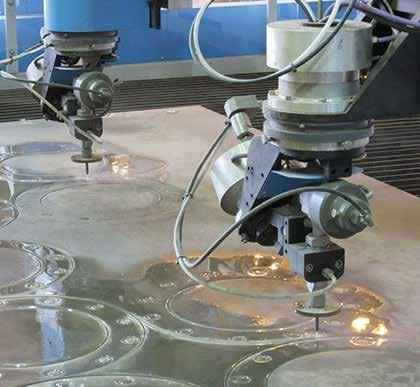
Expertise, Reliability, and Support
With relevant expertise and unwavering support, Intacomp, a South African-based, African-focused provider of abrasive CNC water jet cutting solutions for deployment in diverse applications, has proven its reliability in projects in the DRC and other countries. More driven than ever, the company is eager to participate in projects in Africa where CNC water jet cutting may be required.
The CNC Waterjet Cutting technique has revolutionized cutting tasks in incredible ways, establishing a niche in mainstream projects where traditional methods have dominated. Notably, one of the sectors where it is enjoying wide usage is mining, where it has simplified complex cutting tasks.
Partnering with an Experienced Supplier
For contractors or companies interested in exploring this groundbreaking innovation, first and foremost, it is important to partner with an experienced supplier with a proven track record, Intacomp urges mining companies. In this way, they can get access to suitable products for their respective applications.
Complete Turnkey Solution
In its own right, Intacomp has been consistently building a reputation in different sectors as a reliable provider of CNC Waterjet Cutting Systems solutions. Intacomp sells and services CNC Waterjet Cutting Systems to clientele in diverse sectors. The company can provide customers with a complete turnkey solution, including installation and training.
34 Mining Business Africa | July - August 2023
Cutting multiple pipe flanges using CNC waterjet cutting technique
Intacomp’s CNC Waterjet Cutting Systems consist of a CNC Driven Cutting Bed (various sizes are available), an Abrasive Hopper for the Garnet, a Waterjet Cutting Head (abrasive or water only), and an Ultra High-Pressure Intensifier Pump (choice of pressures available).

Malcolm Cruickshank, Intacomp’s Managing Director, guarantees that the company bends over backwards to provide a vast array of options for CNC Waterjet Cutting clients’ needs. “We can supply this type of solution right from entry-level through to systems that have 5-axis capability with multiple Gantries and Cutting Heads.”
Projects in Africa
Clients have endorsed Intacomp’s water jet-cutting solutions in African countries, where it has been mainly active in the mining sector. A reference point of its capabilities to provide mining-specific solutions was when it provided a solution for a copper mine in the DRC.

In the mining project, Intacomp’s Waterjet Cutting Solutions were used mainly to assist in the expansion of the Processing Plant by cutting on-demand pipe flanges and similar parts when required. This reduced the construction time substantially. The client also used it to manufacture spare parts for machinery and valves to
improve uptime and avoid costly expenses and downtime.
Central to Intacomp’s success in projects is its approach. Cruickshank underlines Intacomp’s devotion to providing every client with the solution needed for a project. “We discuss our client’s needs and expectations with them before we propose a solution to avoid any misunderstanding between us.”
The Partner of Choice
Based on the achievements in different projects, doubtless, there are many benefits to be had from engaging Intacomp as a partner for water jet-cutting solutions in a project. “If you are considering using Waterjet Technology or already have it, then contact Intacomp, and we will be able to assist you with your project. Always look for a reliable supplier who has a proven track record and who can supply the necessary expertise, service, and spare parts to keep your waterjet up and running smoothly,” Cruickshank declares. Intacomp is based in Johannesburg, Gauteng Province, South Africa. The company is well-resourced to service clients involved in mining projects throughout Africa.
Abreast of Advances in Water Jet-Cutting Technologies




Thanks to efforts in research
and development (R&D), there are the latest water jet-cutting technologies or upgrades of existing ones. Observing the trend, Cruickshank says Intacomp expects new advances to spin off into the mining sector in due course. “So far, different technologies for more efficient Ultra High-Pressure pumps

are already on the horizon, and advances in 5-axis hardware and software as well as in Robotics are all moving forward at a rapid pace.”
Cruickshank assures clients servicing the mining sector that they pull out all the stops to stay abreast of the latest technologies in water jet cutting.

Mining Business Africa | July - August 2023 35
WATERJET CUTTING WATERJET CUTTING TECHNOLOGY TECHNOLOGY OUR SERVICES CONTACT US Waterjet Sales Waterjet Spare Part Sales WSI Spare Part for Jetstream Waterjet JetEdge Waterjet Flow Waterjet KMT H2O Jet +27(0) 83 230 4347 South Africa malcolm@intacomp co za www intacomp co za
Jake Hall & Malcolm Cruickshank installing Jet Edge Waterjet in DRC Jet Edge X5 Waterjet Cutter
Containerised water treatment plants
Talbot and Sibanye-Stillwater’s Kloof Mine another step closer to water independence
Sustainable water provider solutions provider Talbot and Sibanye-Stillwater have entered into an innovative lease-to-own arrangement to advance the Miner’s complete independence from municipal water sources.
The multi-national mining and metals processing group aims to materially reduce its reliance on externally-supplied potable water by 90% by 2030 at its South African (SA) gold operations.
A project that has taken Sibanye-Stillwater a step closer to achieving this goal is Talbot’s construction, operation, and maintenance of a multi-technology water treatment plant at the company’s deep-level Kloof Mine operations on the Witwatersrand goldfields, west of Johannesburg.

“Apart from advising large industrial users on how they can bolster their resilience against critical water shortages, supply and quality constraints, we build, operate and maintain plants on a lease-to-own basis,” says Talbot’s Associate Director: Optimisation and Management, Perina Bridgmohan.
The four-megalitre-per-day plant at the Kloof operation is at the center of a contractual arrangement that sees Talbot convert mineralrich water into a potable product, which is then sold back to the site at a fraction of the cost that it currently pays, for municipal-supplied water.
To date, the operation has saved R11 million on water tariffs over a 23-month period, and reduced its dependence on the municipal grid by 29%.
Water is essential for drilling, blasting, milling, processing, cooling and re-mining of tailings facilities, all of which take place in waterstressed environments at Sibanye-Stillwater’s SA operations.
“Water is a finite resource and most communities in South Africa face water scarcity or stress. By tapping into non-conventional sources, we help preserve water for other
essential uses and growing urban development,” says the company’s Superintendent for Strategic environmental projects, Quinton Paulse.
Turning a water liability into an opportunity
Unlike the group’s SA platinum group metals (PGM) operations in the parched North- West province, mines on the highveld goldfields overlain by dolomitic aquifers and are largely water-positive.
“This requires us to pump large volumes of ingress water – often more than double our requirements – from deep underground workings,” says Paulse.
The Witwatersrand basin boasts reserves that are often located several kilometers below the surface. Miners must pump out groundwater to both access gold-bearing rock and create a
36 Mining Business Africa | July - August 2023
Talbot’s four-megalitre-per-day plant at Sibanye-Stillwater’s deep-level Kloof operation, west of Johannesburg
dry, safe environment for operations to continue.
While this is an expensive and energyintensive process, the presence of subterranean water has gone from being a liability to an invaluable asset, particularly when one considers the company’s reliance on this precious resource in an environment increasingly characterised by water scarcity and insecurity. Entrenching fundamental water resource management principles, the project further harnesses alternative water sources advocating the Group’s goal to conserve natural resources and its commitment to supporting the United Nations’ Sustainable Development Goals – in this case, Goal 6: Water and Sanitation for All.
“Projects like the one at Kloof enable us to leverage excess water groundwater by purifying it and putting it back into the cycle. More importantly, we considerably lessen our risk of negatively impacting already water-stressed communities,” says Paulse.
Moreover, it mitigates the risk of infrastructure-related water supply disruptions while generating savings on rising water tariffs. From a sustainability standpoint, the project endorses equitable water access by allowing industrial development, without eroding the availability of water for domestic uses, and
builds an added measure of confidence for water security assurance, which is becoming increasingly pertinent during conditions of unprecedented climatic variability.






“Partnerships like the one we enjoy with Sibanye-Stillwater are attractive to large water users as they can enjoy the benefits of highquality water treatment without incurring up-front capital costs,” says Bridgmohan.
This, she says, gives them the assurance that they will be investing in facilities that will deliver their intended results.
“It is a solution that removes the risk; the client only pays for the water it receives and has the option to take ownership of the asset once it is absolutely assured of its efficacy and fitness for the purpose at the end of the contract period,” she adds.
A second phase, says Paulse, will take Kloof up to between 85% to 95% water independence, building on Sibanye-Stillwater’s SA gold operation’s current level of 64%.
“As a group that is passionate about environmental stewardship, we are delighted to support Sibanye-Stillwater in its ambitious drive towards water independence. By doing so, this partnership helps to protect our most precious and undervalued resource,” Bridgmohan concludes.
Mining Business Africa | July - August 2023 37
Explosion-protected equipment for coal mines
Suitable Equipment, Safe and Productive Mining


The Mine Health and Safety Act (MHSA) in South Africa’s context obligates mining companies to apply Ex Techniques to mitigate their operations from the risk of methane-gas-induced explosions. Aim Equipment has the expertise to help mining companies make informed selections in their respective requirements for Explosion Protected Equipment.
There is an increased demand for coal globally, and as expected, leading coal miners are ramping up production to capitalize on the favourable market. Nonetheless, the challenge is that, usually, with increased activity, there is a simultaneous rise in safety risks.
Explosion Regulations (Ex Regulations)
One of the inherent safety risks, typical in coal mines, is explosions due to methane gas leaks. Methane gas forms in coal mines through a natural process called coalification. As ancient plant matter decays and undergoes pressure and heat over millions of years, it transforms into coal. During this process, methane gas gets trapped within the coal seams. When coal is mined and exposed to the air, the trapped methane can be released, posing a potential hazard if not properly managed. Consequently, cognisant of this, the Mine Health and Safe Act (MHSA) covers Explosion Regulations (Ex Regulations). Ex Regulations obligate mining
companies to adopt suitable Ex Techniques to mitigate the risks.
Carl Pretorius, the General Manager of Aim Equipment, calls on mining companies to be very conversant with the scope of Ex
Regulations for them to apply appropriate Ex Techniques relevant to the identified risks. “The Ex Regulations stipulate that the use of Ex Techniques is not merely a recommendation but a mandatory requirement in all Fiery Mines.”
The Scope of Ex Regulations
Fiery Mines refer to those where the coal seam or seams worked on emitting a significant amount of methane gas. However, the Ex Regulations have a wide scope. Ex Regulations not only apply to fiery mines but also an environment that carries the risk of combustion if sufficient energy, such as a spark or high surface temperature, is introduced.
Ex Techniques
There are several categories of techniques for distinct areas in coal mines. Thus, considering this, Pretorius points out that the selection of Ex Techniques must be based on informed choices.
1. Categories
Ex Protected has several categories but is not
38 Mining Business Africa | July - August 2023
DSP7-TA-20NEE-D12K1 View1
AIM Equipment’s FL-AIM-TRAX machine engineered for the underground coal mining environment
limited to:
• Flameproof (Ex d)
• Increased safety (Ex e)
• Non-sparking (Ex n)
• Intrinsic safety (Ex i)
• Pressurization (Ex p)
• Encapsulation (Ex m)
• Sand filling (Ex q)
• Double Protection (combination of different categories)
2. Distinct areas
Usually, for a coal mine, which falls under the category of a fiery mine, two areas apply –Safe Area (no methane gas expected) and hazardous location (consisting of zone 0 – high exposure and zone 1 – Normally expected gas concentrations)
• Safe area
According to MHSA, any location beyond 180 meters from the mining face is classified as a ‘Safe Area.’ However, all equipment used in this area must still adhere to the surface temperature limit of 200 degrees Celsius, as specified in SANS 868-4 (Non-hazardous locations in coal mines), because of the risk of igniting coal or coal dust in coal mines).
• Hazardous location
On the other hand, any area within 180 meters (including return airways) from the mining face is designated a ‘Hazardous location.’ In this area, all equipment must be safeguarded using the appropriate Ex Technique, depending on the exposure frequency.
Informed Choices, Suitable Product
Considering the escalating risks in fiery mines, prevalent in distinct areas, suitable Ex Protected Equipment should be used unfailingly.
Understandably, there are many suppliers of Ex Protected Equipment. And naturally, to a casual observer, seemingly, there is little differentiation among the products. But there is. And so, Pretorius states that decisions should be based on informed product selection, as the equipment is used in hazardous environments. “Equipment intended for use in explosive atmospheres should typically fulfil specific requirements or ‘tick the boxes‘ in various areas.”
Particularly, the following are some of the key features that such Ex Protected equipment should possess:

• Explosion Protection: The equipment should have appropriate measures firmly in place to prevent the ignition of explosive atmospheres, such as sealing against the ingress of flammable gases or dust, and the ability to withstand potential external explosions without causing an internal explosion.

• Robust Construction: The equipment should be built to withstand the harsh
and challenging conditions typically encountered in mining environments, including resistance to impact, vibration, moisture, and dust.

• Temperature Ratings: The equipment should be designed and rated to operate within specific temperature limits, ensuring that surface temperatures do not exceed the permissible levels for the relevant hazardous area classification.

• Gas Group Compatibility: A fiery mine is classified as a result of a possible release of methane gas, therefore categorized as group I as this covers the risk of methane gas. The equipment installed in the defined hazardous location must cover Group I requirements as a minimum. For commercial purposes, some equipment manufacturers design equipment to comply with both Group I (mining) group II (surface gas) and Group III (surface combustible dust) explosive atmospheres.
• Electrical Protection: Electrical components of the equipment should be designed to prevent the occurrence of sparks or arcs that could potentially ignite the surrounding atmosphere. This may include the use of flameproof (containment of spark), intrinsically safe circuits (energy limitation), increased safety measures (limitation of spark), or other appropriate techniques.
• Compliance with Standards: The equipment should comply with relevant standards and regulations specific to mining and explosive atmospheres, such as SANS 868 (Explosion-protected diesel engine systems), SANS 60079-1 (flameproof protection), and SANS 6007911 (intrinsic safety), which outline the requirements for Ex-protected equipment.
• Proper Certification: The equipment should be certified by an Approved testing laboratory (ATL) to ensure that it meets the necessary safety standards and regulations for use in explosive atmospheres. Guidelines for the certification process are outlined in the readily available ARP0108 issued by the Department of Minerals Resources and Energy department (DMRE).
Efficient and Safe Coal Mining
Generally, as they aim at delivering high yields, Aim Equipment stresses that mining companies must not lose sight of mitigating the escalated high risks that they face, mainly methanegas-induced explosions. “The importance of selecting the right Ex-Protected Equipment does not have to be overemphasized. Wrong decisions are a high risk in themselves. Informed decisions enable efficient and safe coal mining.”
Mining Business Africa | July - August 2023 39
AIM-EGS3-BOA V1
AIM-FPJB2-JB2A V 1
AIM-FPE2-FEA V 1
AIM-FPBE-BOA V1 Battery Back-up
Explosion-protected equipment for coal mines

AIM’s Edge in Ex-Protected
Naturally, being in an industry governed by strict regulations, it is challenging to stand out with uniqueness. However, AIM Equipment’s competitive advantage lies in its extensive fifty-year presence in the supply of relevant and reliable Ex-Protected Equipment.
Adequately Resourced
Distinctively, what gives AIM Equipment the edge is that it is adequately resourced. The company has an internal design office and collaborates with external consulting engineers. Moreover, through in-house manufacturing capabilities, it can maintain exceptional quality control over products and services.
Integral to AIM Equipment’s operations is its internal design team. The internal design team consistently enhances product designs, leveraging internal manufacturing capabilities to swiftly produce improved products. “We introduce new technology to the market whenever we identify the need. With our deep understanding of the operating conditions, we can design purpose-built products that provide effective solutions to our customers,” Pretorius expounds.
The design team consistently pushes the boundaries in innovation. Befittingly, AIM holds several patents with the scope of broadening the range. The patents include electronically controlled engine starting systems, cooling systems for special flameproof exhaust systems with exhaust after-treatment, multifunctional flameproof transmission control modules, and fail-safe emergency brake systems among others.
Equipment
Versatility
Pretorius cites versatility as the most outstanding feature of Aim Equipment’s flagship systems. “The systems are incorporated into our Ex machines, resulting in highly reliable, low-maintenance machinery that fully complies with current MHSA regulations and seamlessly integrates with any third-party PDS/CAS supplier, enabling the equipment to be fully level 9 PDI compliant.”
Versatility is also evident in the modular features of FL-AIM-TRAX machines. The modular features enable the FL-AIM-TRAX machines to be upgraded easily. For instance, if the client has an existing FL-AIM-TRAX machine, it can be easily upgraded to the latest technology to comply with the latest MHSA requirements.
Some of the upgrades that the modular feature allows to be carried out are:
• Transmission control upgrade (manual selection to fully automatic);
• Improved transmission ratios;
• Chassis improvement upgrades;
• Engine control upgrades;
• PDS/CAS interfacing upgrades;
• Secondary (emergency) brake upgrades;
• PTO system upgrades
Another innovation that typifies versatility is the Machine Controller. The Machine Controller is specifically designed and built to automate machine control and serve as the interface between the machine, the operator, and other third-party systems like PDS/CAS. It is an integral part of its FL-AIM-TRAX machine
range and offers comprehensive Level 9 PDI functionality.
Industry Feedback
So, how has the industry reacted to the rollout of AIM Equipment’s flagship Ex-Protected Equipment?
In response to this question, Pretorius comments, “As the industry saying goes, ‘No news is good news,’ which has become the norm. Typically, you only hear from customers when something goes awry, accounting for 99% of the interactions.
“Feedback is predominantly provided by maintenance managers, often only when prompted. Operators tend to stick with our machines due to their reliability and user-friendly operation, making them hesitant to switch to alternative options.”
However, Pretorius explains, generally, mining companies favour the company’s equipment over others in the market. Mainly, this is attributed to the equipment’s compliance with the latest regulatory requirements, which eliminates the need for any additional third-party add-ons.
Excited About Opportunities
The company is excited about opportunities in fire risk mitigation that are opening up as coal mining in Africa is increasing to meet growing global demand. “We are adequately resourced to devise a solution specific to the risk that the client faces of any scale, and are eager to serve optimally.”
40 Mining Business Africa | July - August 2023
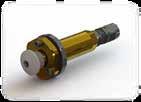
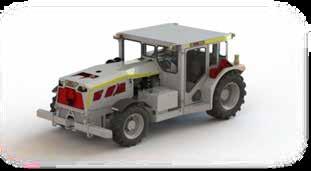

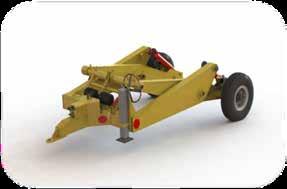

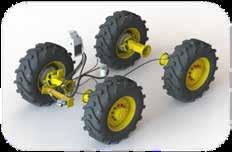
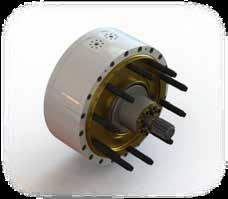
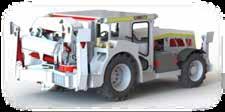
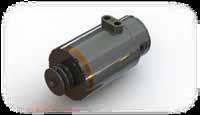







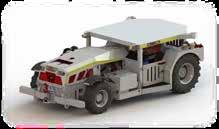


• Multi Bin system •SANS 1589 Certified •PDI - Level 9 Ready •Smart Alternators up to 1.5kW •Multi purpose controllers •Solenoid valves •Diesel systems •Sensors •Starters •Automatic / Powershift •PDI - Level 9 Ready •SANS1589 Brakes •Flameproof •TIER III •Hauler •Crane •PTO FL-AIM-TRAX EX (FLAMEPROOF) Products BRAKES Contact details: 013 665 2111 www.aimequipment.co.za
HEALTH INSURANCE FOR MINING, OIL, GAS, ENERGY AND PETROCHEMICAL INDUSTRIES
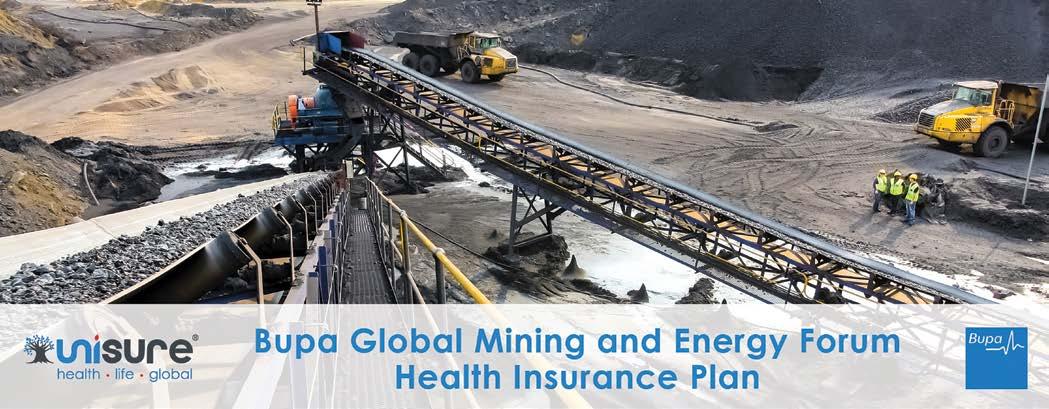
Protect Your Employees With Sector-specific Health insurance
If your company is in the mining, energy, oil and gas industry, your employees need sector-specific international health insurance. Why? Because it’s uniquely and competitively priced and caters for your industry’s unique challenges, particularly when it comes to remote locations within Africa.
A real-life medical evacuation story
Imagine this scenario: Executives from your mining company are travelling within Zambia on an important business trip. You get the call that there’s been a car accident, and that two of the four passengers in that car are your staff members. One passenger wasn’t wearing a seatbelt and has been flung far away from the car. The other three are in the vehicle and alive, but in a very serious condition.
What do you do?
In this case study, the client and their employees were insured by Unisure’s Bupa Global Mining and Energy Forum health insurance plan. Within minutes, they were on the phone with Unisure Assist’s Operations Director Cristina Meixieira, who runs the company’s dedicated emergency assistance division.
Even though Cristina and her assistance team are contending with a remote (as yet unknown) accident location, panicked members and a language barrier, they remain calm and start to mobilise their contacts. Years of experience and an unparalleled passion for what they do make them one of the best assistance teams on the African continent. Within minutes, the assistance team has located the scene of the accident and is making calls to dispatch a ground ambulance. They need to get the patients to the nearest clinic to stabilise them, but they’re also thinking ahead.
Knowing that their injuries are likely to be very serious, the assistance team start calling their networks and arranging for a medical team at Livingstone Central Hospital to be on standby. Thereafter they’ll organise the harrowing paperwork that an international medical evacuation requires and get them safely to the Milpark Trauma Centre in Johannesburg, South Africa.
Health insurance cover in Africa is vital
In this story, the executives received the care they needed quickly and recovered from their injuries. In many scenarios like the real-life case study described above, however, the story doesn’t end as well. Remote locations in Africa make emergency response times unpredictable at best. Medical facilities can be limited. When it’s a serious accident, the need for evacuation to a major city, and thereafter evacuation outside of the country, is very likely. Evacuations require an extraordinary amount of paperwork and procedures – and you need the experience and relationships to navigate these processes speedily and efficiently.
Sector-specific health insurance
That’s exactly why sector-specific health insurance like Unisure’s Bupa Global Mining and Energy Forum (MEF) plan can be an invaluable source of support to employers and employees alike. The MEF plan is insured by Bupa Global and distributed by Unisure. It’s specifically designed for companies operating in the mining, oil, gas, energy, petrochemical and supporting industries. Boasting a strong African footprint and a worldwide network of top medical networks and service providers, the team behind the MEF plan understands the continent and the challenges that it often
42 Mining Business Africa | July - August 2023
The MEF plan is insured by Bupa Global and distributed by Unisure. It’s specifically designed for companies operating in the mining, oil, gas, energy, petrochemical and supporting industries.
presents in terms of transport and logistics, and also boast their own in-house medical assistance team.
Here are four ways in which the MEF health insurance plan stands apart from the rest:

• It’s competitively priced. Because companies operating in the resources sector have very robust occupational health and safety protocols in place, MEF offers material cost savings on premiums without in any way compromising on the level of care and benefits for members of the plan.



• It offers Africa and worldwide cover. The MEF plan is underwritten by Bupa Global, a leading international healthcare company with a strong international footprint and service provider network. The areas of cover offered are Africa and India, or worldwide, offering members access to top-tier hospitals globally.
• It’s flexible. The Bupa Global MEF plan offers numerous pricing tiers, with overall annual maximum benefits starting from USD 150,000 and increasing to as much as USD 10,2 million. The cover provided by the plan gives members access to top tier hospitals globally.
• It offers 24/7 online support. The MEF health insurance plan is underwritten by Bupa Global, offering members access to Bupa’s world-class Members World app. Via the app, members can submit claims, receive preauthorisation and manage their policies from their smartphones. Members also receive access to the Everyday Resources Employee Support Programme, offering various types of confidential support in multiple languages 24/7 by telephone, email, SMS or online. Lastly, members also receive access to Bupa ‘Global Virtual Care’, a new smartphone app that provides confidential access to international doctors by telephone or video call.
If you would like to know more about how the Bupa Global MEF health insurance plan can protect you and your employees, visit www.unisuregroup.com/mef/ or email info@unisuregroup.com and use ‘MEF Quote’ in the subject line.
Mining Business Africa | July - August 2023 43
Trommels for screening
High efficiency trommel set to change screening
ELB’s MDS track, static and recycling trommels, speed up processing and ability to handle oversize materials in screening rugged screening applications.
Crushing and screening giant, ELB Equipment, has completed the minerals processing equipment cycle with the addition of a complete range of high efficiency trommels that are set to change the way screening is done in South Africa.
Its Powerscreen scalpers and screens already dominate the local market and the addition of the world’s leading trommel manufacturer, MDS, is bound to close the circuit for miners who are already familiar with the ELB Equipment way and its high-quality minerals processing offerings that are predominantly derived from the Terex Corporation.
MDS track, static and recycling trommels, as well as apron feeders, are quick and can handle a wide range of media including blasted rock and riprap, as well as varying substrates such as clay, limestone and even recycled concrete rubble. But, most importantly, it is the new trommels’ ability to speed up processing and ability to handle oversize materials that is most exciting for the local market.
Volumes up
ELB Equipment divisional director, Wakefield Harding, says the range of static and tracked trommels are unmatched in the local market and are simply not available as standard production machines elsewhere. This means it will introduce a totally new way of doing things in the local market and is bound to turn up production volumes while increasing profitability on many new and existing plants in southern Africa.
MDS tracked and mobile units especially have the ability to be gamechangers bringing the speed and versatility of trommels to sites wherever they are needed. Trommels have the ability to separate up to four streams of aggregates quickly and efficiently starting with soil and fines at the feed-end moving through to larger rocks and oversize rock up to 1,5m at the discharge end.
It is this rugged ability of the MDS designed and manufactured trommels that makes them unique as they have the ability to shorten the processing equipment chain onsite – either direct from blasting and loading or from a primary crusher or even recycled materials and composting. The addition also supports
ELB Equipment’s growth strategy to expand its offering into new crushing, screening and environmental industries with products that complement its existing portfolio.

Trommel types
MDS design and manufacture heavy duty static trommels in the M615 and M820 models. These can process from 500 to 750 tons per hour with 3-4 outputs each. The trommels are built with portability in mind for applications processing overburden, recycling/skip waste, general scalping, all quarried aggregates, demolition waste, riprap/armour rock and blasted rock. MDS manufacture a variety of tracked trommels to make mobility easier for customers and improve mobility on site making this an ideal solution for mining contractors. These versatile trommels can handle material up to 1m in size and have outputs from 300 to 750tph. Some applications include:
Placer Mining. Trommel screens are commonly used in placer mining operations to separate valuable minerals from the surrounding gravel or alluvial deposits. The rotating drum of the trommel screen allows the fine particles to pass through while larger rocks and debris are separated and discarded.
Gold Mining. Mobile trommel screens are extensively used in gold mining operations. They help in the screening and separation of gold-bearing material from other debris, such as rocks, clay, and sand. Trommel screens are particularly effective in capturing fine gold particles.
Coal Mining. Trommel screens are utilized in coal mining to separate coal from waste material. The trommel screen separates the coal based on size, ensuring that the appropriate coal product is processed further while discarding larger rocks and debris.
Quarrying. Mobile trommel screens are used in quarrying operations to separate different sizes of stone and aggregate materials. By utilizing different screen sizes and configurations, trommel screens can produce various sizes of screened material for further processing or sale.
Mineral Processing. Trommel screens play a crucial role in mineral processing plants
by separating valuable minerals from waste material. They are often used in conjunction with other equipment like crushers and conveyors to efficiently process bulk materials. Sand and Gravel Operations. Trommel screens are commonly employed in sand and gravel operations to separate and classify different sizes of material. The screens help remove oversize rocks and debris, allowing the sand and gravel to be processed further for various construction and industrial applications. Recycling. Mobile trommel screens find applications in recycling operations, such as construction and demolition waste processing. They aid in separating and sorting different types of recyclable materials, such as wood, plastics, metals, and aggregates.
Countrywide availability
“We believe that the addition of the MDS brand will open up new markets for both the company and for our clients. These are top quality machines from the world’s leading supplier within the portfolio of our long-time supplier, Terex Corporation, which also owns Powerscreen and Terex branded processing equipment which has been distributed by ELB Equipment for decades.
“As a result of this trusted combination, and with our footprint throughout southern Africa, we expect the MDS offering to expand quickly across all mining types and into the growing recycling markets. There are also some commonalities between equipment under our umbrella and it simply makes to go with a single supplier for all equipment requirements on site.
“This type of approach also supports our ‘Best of breed from a single supplier’ approach which means that customers are able to buy the best types of equipment from specialist manufacturers around the world from a single supplier – ELB Equipment,” concludes Wakefield.
ELB Equipment, Wakefield
Harding, Tel: (011) 306 0700, Email: wakefieldh@elbquip.co.za , Web: www. elbequipment.com
44 Mining Business Africa | July - August 2023

On-Site Pressure Swing Adsorption Generator Systems

Eliminate processing, refilling and delivery issues with on-site Pressure Swing Adsorption Generator Systems
The use of Pressure Swing Adsorption technology has become increasingly popular for on-site oxygen or nitrogen production in many industries and the mining industry is not lagging behind. More and more mining and mineral processing applications now require the use of this technology.
OXYMAT has a wide range of nitrogen-generating systems for coal mines
By Patience Gumbo-Chimbetete
On-site Pressure Swing Adsorption
(PSA) generator systems find various applications in the mining industry, offering several advantages for specific processes. PSA is a process that separates gases based on their molecular characteristics to produce pure elements from compressed air. In silver and gold extraction, for example, oxygen is one of the key elements used for ore processing as pressure oxidation and cyanidation. Embracing the PSA technology can therefore alleviate many issues while increasing recovery and ore throughput.
On-site PSA generator systems offer significant advantages for mining projects, providing a reliable and cost-effective solution for gas generation and supply. By taking this approach and implementing the system, mining operations can achieve greater autonomy, reliability, and efficiency in gas supply while ensuring compliance with safety
and environmental regulations. However, it is essential to conduct a thorough analysis of your specific mine requirements and consult with experts to determine the optimal design and configuration of PSA systems for each application. This is where OXYMAT comes in.
One of the top manufacturers of on-site oxygen and nitrogen generator systems, OXYMAT saw a gap in the mining industry around 2007 with the increased demand for nitrogen for inerting the atmosphere to reduce the risk of explosions in underground coal mines in Europe. Later on, the application was extended to oxygen-generating systems for gold mines after the introduction of extensive gold extraction. Since then, the Denmarkbased oxygen and nitrogen supplier has not looked back. “We have been producing oxygen since 1978 and nitrogen from 2001 for various industries. However, around 2007 we saw an increased demand in the mining sector and realised how our applications would go a long way in alleviating major issues. So, we started
with the coal mines and later in gold,” says OXYMAT Sales Manager, Miroslav Simovic.
“Since then, OXYMAT has become a major player in the mining industry with more than 6000 oxygen and nitrogen generators installed worldwide,” Simovic adds.
He explains that the process looks very easy because all that’s needed is ambient air and electricity where adsorption takes place, leading to the production of pure nitrogen or oxygen. “Our units are offered in a well proven plugand-play solution, which means installation and start-up can be carried out in a couple of days, rather than the normal three to four months,” Simovic adds.
He shares that OXYMAT has a wide range of nitrogen-generating systems, specifically for coal mines where nitrogen is primarily used to prevent mine fires and to inert abandoned areas. In gold mines, Simovic says the company provides oxygen units with a power consumption of 0.55 kW/kg, adding that this is the lowest in the industry at the moment.
46 Mining Business Africa | July - August 2023
ON-SITE OXYGEN FOR REMOTE AREAS
Secure your oxygen supply with on-site production. With an on-site oxygen solution, all you need is power and air, then you are ready to produce and be independent.
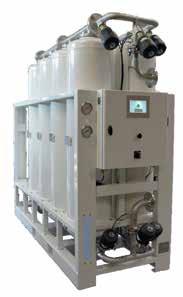

OXYMAT has decades of experience supplying on-site oxygen for mining. We can deliver a full plug-and-play frame-built solution – reducing installation cost and time.

Based on our vast experience with projects to gold recovery, we have designed a catalogue
of standard solutions, that will boost your gold recovery, reduce your operating and maintenance cost and give you investment payback in less than 12 months.
Contact us to hear more about our oxygen solutions for gold recovery – or if you are involved in other mining with the need for either oxygen or nitrogen. We are here to listen and guide you in the decision.
Visit oxymat.com to learn more.
Contact us at sales@oxymat.com to hear more about our solutions for your specific needs
On-Site Pressure Swing Adsorption Generator Systems


Common uses of on-site psa generator systems at mines
It is important to note that the suitability of on-site PSA generator systems depends on the specific gas requirements of a mine. In this regard, Simovic says OXYMAT can help customers determine the feasibility and benefits of implementing such a system for a particular application. He adds that the company offers different sizes of generating systems that customers can select from and that these can be tailored to meet the unique needs of the mining project, ensuring optimal performance and safety standards. Additionally, OXYMAT has experienced technicians and engineers available to assist customers timeously. Oxygen and nitrogen generation are the major utilisation for PSA generator systems. These gases are often required for various purposes, which include health care, combustion processes, metal refining, inerting, fire prevention and purging. Having an on-site PSA generator system installed means the gases can be produced with high purity levels directly at the mine site, eliminating the need for refill cylinders or liquid deliveries, while ensuring a continuous and reliable supply.
Benefits of on-site psa generator systems in mining projects
PSA systems offer several advantages over traditional gas delivery methods, including eliminating processing, refilling and delivery issues. Below are some of the major benefits:
1. Enhanced Safety - Mining operations often involve dangerous environments and gases, such as carbon dioxide, methane and hydrogen sulphide. On-site PSA generator systems are vital for the production of gases like oxygen and nitrogen directly at the mine site, ensuring a safe and continuous supply without having to transport or store hazardous gases.
2. Cost Efficiency - On-site PSA generator systems mean you don’t have to worry about the recurring overhead costs associated with gas cylinders, liquid tanks and external gas suppliers. Because the gases you need would be produced on-site, mining projects can significantly reduce operational expenses, thereby ensuring peace of mind.
3. Flexibility and Scalability - On-site PSA generator systems offer flexibility and
scalability to adapt to changing gas demands throughout the mining project’s lifecycle. As gas requirements fluctuate or expand, the system can be adjusted accordingly to meet the evolving needs, allowing for efficient resource allocation and avoiding waste.
4. Improved Operational Efficiency –According to Simovic, all that’s required in addition to the installed PSA generator systems is air and electricity. This translates into a reliable and uninterrupted gas supply that allows mining operations to run smoothly without downtime caused by delays in gas delivery or refilling.
5. Environmental Sustainability: On-site PSA generator systems contribute to environmental sustainability by minimizing the carbon footprint associated with gas transportation. By generating gases onsite, mining projects reduce greenhouse gas emissions and their impact on the environment.

6. Tailored Gas Production – Because each mining project has specific gas requirements depending on its processes and environmental conditions, PSA generator systems can be customised to produce gases with precise purity levels and flow rates, ensuring the exact gas specifications needed for various applications, such as ventilation, mineral processing and safety measures.
7. Remote Operations: Mining projects located in remote or inaccessible areas may face challenges with gas supply logistics. On-site PSA generator systems are particularly advantageous in such scenarios as they eliminate the need for frequent transportation of gas cylinders or reliance on distant suppliers. This reduces logistical complexities and ensures a reliable gas supply even in remote mining sites.
48 Mining Business Africa | July - August 2023
Oxygen and nitrogen generation are the major utilisation for PSA generator systems.
MAXIMIZING ON AFRICA’S HYDROGEN POTENTIAL TO ENHANCE A SUSTAINABLE ECONOMY EVENT

HILTON SANDTON | JOHANNESBURG | SOUTH AFRICA

ORGANIZED & HOSTED BY invest africa
6
Unlocking opportunities for Africa’s Hydrogen Potential
- 7 SEPTEMBER 2023
HYDROGEN - H
OEM replacement parts for african mining operations
OEM Quality Spare Parts for Large Fleet Managers in African Mining
top factories of the world and thus the quality of parts is never in question. The wide range includes parts for Engines, Clutch, Transmission, Hydraulic, Final Drive, Under-Carriage, Ground Engaging Tools, Accessories and other parts.
UKP believes in fair-trade policy and, therefore, for large users with sizable requirement it takes them direct to the manufacturers and arranges supply straight out of factories thereby ensuring quality parts at the right price. This eliminates any middlemen and discounts the price sizably in comparison to dealership rates. For further details please contact the sales team.
The company has helped fleet owners bring down their purchase prices with such direct purchase out of manufacturers and thus many users are now reaping this benefit by relying on this expertise. UKP is now on board as an extended purchase-arm for machine owners. It has won many such annual contracts wherein users pay a nominal contract fee to the company and top-quality parts are bought at factory prices.
UKP is very happy to serve all kind of machine owners and dealers of parts and is willing to expand its presence in Africa.
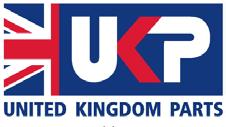
The importance of quality parts is very well understood by UKP and therefore all the parts supplied originate out of OEM and fully recognised factories. These parts are produced for UKP and carry warranty of 12 months. The parts being directly coming out of factories are , therefore, very competitively priced giving the users lost of saving and brining down their opex drastically.
UKP has strong and loyal relations with the

UNITED
KINGDOM PARTS LTD 6 CHURCH GROVE, WEXHAM - SL3
50 Mining Business Africa | July - August 2023
United Kingdom Parts is a renowned stockist and distributor of OEM and Top-Quality after-market parts for Caterpillar, Komatsu, Hitachi & Volvo mining and earthmoving machines, Scania and Volvo trucks and John Deere, CNH & Massey Ferguson tractors, and Cummins & Perkins engines. UKP is headed by Viren Mundra, a veteran in this industry with over 53 years of expertise and the company has combined experience of over 100 years with support of dedicated professionals and technicians. The company carries stock of over 25,000 variety of parts 6LF,
UK T- +44 1753 708788, M +44 77542 33777 www.uk-parts.com
UViren Mundra, Head of United Kingdom Parts (UKP)
and supplies to over 100+ countries and many of them to the mining companies and users in Africa.

Turnkey Water Cooling Refrigeration Plants For Underground Mines
BBE Commissions another Surface Refrigeration Plant in Mali

BBE Project’s Project in Mali at an advanced stage of construction
Bluhm Burton Engineering (BBE) Projects has commissioned another turnkey surface refrigeration plant at Société des Mines de Loulo (SOMILO) SA gold mine in Mali, West Africa. The Loulo gold field, which includes the Gara, Yalea and Gounkoto deposits is less than 2km east of the border with Senegal (marked by the Falé river) on the West Mali gold belt. The refrigeration plant as well as other infrastructure will enable the mine to expand its operations and maintain its gold production output.
Client background
Société des Mines de Loulo (SOMILO) SA is an exploration and mining company and the owner of the Loulo gold mine, which in turn is owned 80% by Barrick Gold and 20% by the state of Mali.
Gold potential was first recognised by Syndicat Or joint venture between the Malian Direction Nationale de la Géologie et des Mines and the French Bureau de Recherches Géologiques et Minières (BRGM). The Gara gold deposit was discovered in 1981 by the Syndicat Or joint venture. In 1992, BHP Minerals Mali entered into an agreement with Société des Mines de Loulo for a joint venture that developed the Gara deposit into a Mineral Resource that was deemed sub-economic at the time.
During 1996, Randgold Resources acquired BHP Minerals Mali and undertook additional regional exploration, which resulted in the discovery of Yalea in 1997, the second of two deposits that make up Loulo Mine. In 2003, a feasibility study was undertaken at Loulo on a
12 Mt at 3.60 g/t Au for 1.4 Moz Ore Reserve, which led to the construction of an open pit mine in 2004. Production from Loulo mine started in 2005 as an open pit operation. The Loulo underground mine passed through the feasibility study stage in 2005, with development beginning in 2006. The first gold produced from Yalea underground was in 2008 and Gara underground in 2011.
Randgold Resources merged with Barrick Gold in 2018/2019. This mega-merger created the world’s biggest gold miner by market capitalisation. The merger was required to pool the companies’ resources to stay competitive in the industry.
The challenge
After commencing with open pit mining in 2005, the mine took the opportunity to start looking at mining underground. Underground mining at Loulo mine is relatively shallow, but being at low altitude in an equatorial region, the mine experiences a challenging climate of both humid and hot, through the various seasons, particularly when hot and humid occur at the same time, which is for most of the year. These challenging climate conditions necessitated the turnkey construction and commissioning of a refrigeration plant at both Gara and Yalea dedicated downcast ventilation holes, in 2016, to cool the underground workings. Since 2016, both the Gara and Yalea underground mines have expanded production towards the south requiring further underground cooling.
The solution
An independent mine ventilation consultant prepared and issued an enquiry on behalf of SOMILO for a turnkey contract to build a 14MWR refrigeration plant at both Gara and Yalea dedicated downcast ventilation holes, in 2015. The BBE tender covered all technical, commercial and statutory requirements laid out in the enquiry documents and BBE Projects was awarded the turnkey contract by means of competitive tender, after a few rounds of technical and commercial queries. During the execution of the project, BBE Projects carried out detailed design, procurement, manufacturing, quality control, shipping, delivery, construction, erection, installation, supervision, project management, commissioning, testing, certification and hand-over of the refrigeration plants.
In a similar manner, SOMILO awarded BBE Projects a second turnkey contract to build a refrigeration plant at the Yalea South dedicated downcast ventilation hole in 2021. This time SOMILO requested that all equipment supplied by BBE Projects must be compatible and interchangeable with the existing refrigeration plants to minimise spares holding and to allow the mine to implement the same corrective and preventative maintenance schedules used at the existing plants.
The new refrigeration plant capacity is 8MWR and is smaller than the existing refrigeration plants, but with space reserved and design provisions made to expand the refrigeration system in future if required.
52 Mining Business Africa | July - August 2023
The new refrigeration plant also has many improvements compared to the existing plant. These innovations were brought about during meetings and consultation with mine employees that maintain and operate the refrigeration plants.

The most notable innovation is the fivemetre diameter steel inlet duct that connects the bulk air cooler to the dedicated downcast ventilation hole complete with a self-closing door positioned directly above the shaft to relieve shockwaves that occur during certain times of day due to blasting underground. The damper blades are of a relatively light construction allowing the blades to open with little pressure and close using adjustable counterweights.
The refrigeration machine is an 8MWR dualcompressor York YD with R134a refrigerant, housed in a plant room erected from steelwork that was designed, shop detailed and fabricated in South Africa. Dual compressors were selected to halve the maximum instantaneous start-up current of the refrigeration machines thereby mitigating the possibility of de-stabilising the mine’s power grid. The mine generates its own power by means of diesel generators and solar plants on site for mining operations.
The Bulk Air Cooler (BAC) is adjacent to the plant room, minimising interconnecting
piping and thermal losses. The BAC basin is constructed from reinforced concrete with insulated panel side walls and roof to speed-up construction time, reduce time spent working at heights and increase thermal efficiency of the spray chamber. Similarly, the Condenser Cooling Tower (CCT) used for heat rejection is constructed from lightweight FibreglassReinforced Plastic (FRP) components with similar benefits in cost, time and safety. Furthermore, FRP is a good alternative to concrete because of its high strength, lightweight and stability.

All civil, structural, mechanical and piping works were carried out by local contractors in line with the mine’s commitment to drive socio-economic development and training. Site construction, erection and assembly was supervised by BBE Projects with regular inspections by discipline specific engineers from BBE and OEMs.
Equipment for the refrigeration plant was sourced and shipped from all over the world. CCT fans and electrical motors from Brazil, FRP CCT structure and header piping from India, FRP CCT fan stacks from Poland, CCT gearboxes from Belgium, FRP CCT Cladding from Turkey, refrigerant from Dubai and the refrigeration machines from USA. The balance
of the mechanical equipment (pumps, plant room crane, valves, piping, fasteners, etc.), EC&I equipment (transformers, MV Switchgear, MCC, cables, instrumentation, etc.) and civil material and structural steelwork (rebar, plant room steelwork, shaft inlet ducting, pipe supports, etc.) were consolidated and shipped from South Africa.
The construction of the refrigeration plant also came with a unique set of challenges such as changing the shipping route from Dakar port to Guinea port midway through the project because ECOWAS (Economic Community of West African States) imposed sanctions on Mali. Other challenges included delays due to storms at Durban port, and a major supplier going into liquidation (fortunately only near the end of the manufacturing process).
Current project
BBE Projects is currently working on the Gara South Refrigeration plant that will be commissioned later this year, and the project is on track for completion in the third quarter of 2023. Once complete, the refrigeration system will enable mining in the largely untapped southern area of the orebody, extending the life of mine significantly.
TURNKEY MINE VENTILATION AND REFRIGERATION SOLUTIONS.

BBE Projects delivers turnkey projects in the fields of mine ventilation, refrigeration and cooling with 20 years’ experience and a proven track record in challenging locations.
011 706 9800
Mining Business Africa | July - August 2023 53
Plant room
Breathing life into mines www.bbe.co.za Tel
Industrial Ventilation Mine Cooling & Heating Engineering & Construction Mine Fan Stations
info@bbe.co.za
Effective Scanning, Secured Assets
Some mining companies, especially in gold and platinum, are profiting from a spell of high prices in their respective commodities. Despite this, employees of these companies may not be immune from the effects of tough economic conditions. And so, the employees may seek additional means of making ends meet. Unfortunately, in depths of despair, some may find pilferage of valuable minerals within their grasp the easy way out.
So, gold and platinum producers must enhance security measures to safeguard their invaluable assets. One of the practical options mining companies could adopt is investing in technologies (innovations) with proven efficacy in deterring theft.
Opportunities in body scanning technologies

Rudzani Ramovha, the Managing Director of X-Scann Technologies, suggests that mining companies could consider exploring opportunities in safeguarding valuable minerals that body scanning technologies have opened. This is based on concrete evidence gathered from mining companies where X-Scann Technologies supplied its scanning solutions.
Xscann’s intervention save millions
Through its intervention, recently, X-Scann Technologies has helped South African platinum and gold refineries stem huge losses of gold and PGMs (respectively) hugely attributed to theft. “Usually, platinum and gold refineries measure the material value of what goes out of the plant after processing against what came in. In the context of the two projects, conspicuously, there was a huge discrepancy between the two, strongly suggesting possible theft,” says Ramovha.
To better comprehend the scale of the challenge, the recorded losses translated into large sums in revenue, probably in millions. And so, their impact on the bottom line could not be underestimated.
Traditional security measures fall short
All the more intriguing was that the losses at the two refineries occurred despite the
implementation of traditional security measures. This raised questions about the effectiveness of the security measures, prompting a rethink.
Some traditional techniques previously employed mainly involved physical searches (hand part) and hand-held metal detectors. Unfortunately, though well-intentioned, shortcomings were encountered, mainly:

• It was difficult to find stolen metals hidden in difficult-to-reach areas to search, including swallowed metals.
• Physical searches and metal detections equipment could only reach limited areas of the body;
• Longer time taken to search people exiting the plants, causing long queues; during peak times;
• Unidentified people were going into the plants and coming out undetected; and
• Collusion between searching personnel and the workforce.
Identifying challenges, devising a solution
The team at Xscann viewed the challenges as a glorious opportunity to prove their expertise. At the outset, before embarking on any project, Ramovha clarifies, the team is cognisant that every client has a unique problem, which must be addressed according to its own merits. And this was the case with the gold and platinum refineries.
Accordingly, the team at X-Scann Technologies spared no effort in identifying the common problems encountered and customising a suitable solution specific to each client. “We highlighted different scenarios, specifically possible areas where minerals could be hidden and difficult-to-reach with conventional searching. Then based on this, we established that a suitable solution could be an x-ray full body scanner able to identify objects concealed internally and externally,” Ramovha narrates.
Meticulous planning and execution
Tailoring solutions for each of the two refineries entailed meticulous planning and execution. There had to be attention to detail and every element accommodated. Despite each refinery’s uniqueness, integrating the X-Scann Body
54 Mining Business Africa | July - August 2023
X-ray full body scanning for mineral security
X-Scann Technologies’ X-ray body scanning solution has reduced theft at platinum and gold refineries in South Africa. The team involved in the project look forward to replicating this success in similar projects in the Southern Africa region and beyond.
The X-Ray Scanner enables detection of objects concealed both internally and beneath clothing
Body Scanner Solutions


Dual view X-ray Body scanner (BS16HR-DV)
For customers who place importance on the prevention of smuggling of precious metals and gems, the Full Body Scanner is an essential security tool. The new machine offers outstanding image quality of the entire body with high image resolution and a flicker free display, making it an effective tool for the detection of; Precious stones (including diamonds) and precious metals, Contrabands and threat detection (weapons, explosives, narcotics, etc.), and Objects Concealed internally or externally.
Xscann Technologies boasts an inhouse developed X-ray Management Software (XMS)

Xscann X-ray management software (XMS) Includes: Once-off software licensing, Matrix configuration for gender segregation, various access control integration (e.g., Babylon, Impro, Opto, etc.), Algorithm to ensure that personnel will not be subjected to radiation exceeding 1mSv per annum, Logging of personnel radiation data for archiving, Reports generator.
XMS reporting includes: X-ray totals by radiation, X-ray totals by name, Over quota individuals, Excessive entries, Excessive dummy scans, Excessive holds, Scan logs, search logs, etc.
Address: 6 Guernsey Drive, Longmeadow East, Edenvale, 1610
Tel: +27 11 608 1504 | Fax: +27 11 608 1570
Email: axel@xscann.com, charl@xscann.com, rudzani@xscann.com
Web: www.xscann.com | Partners: www.ceia.net; www.smithsdetection.com
GLASSES WATCH BELT COINS CELLPHONE
X-ray full body scanning for mineral security
Scanner into an existing access control system was the common challenge.
Adeptly, the X-Scann team seamlessly synced the Xscann Body Scanner with the access control systems. “We have implemented the X-ray management software (XMS) to manage the Body scanner integration to access control, and the output is amazing. We are proud to have risen to the challenge,” says Ramovha. This approach was cognisant of needs in security systems specific to refineries that produce highly-valuable products. There is no margin for error. And the refineries were no exception.
Significant payback
Recently, following the installation of the X-Scanner solution, the Team approached the refineries for feedback. Thus far, from what they have gathered, there is significant payback on the investment.
Management at the refineries confirms a reduction in theft. Now, they are assured their invaluable assets are secure.
Benefiting client, contented team
On the whole, the Team at X-Scann Technologies are satisfied that the refineries are benefiting from the host of features the X-Scanner offers. “The new body scanner offers
massive benefits, specifically, dose exposure controls, reviewing previous records, and reports generation. The client can now also perform full auditing of previous daily scans. Most importantly, improvement in the balance of what was measured coming into the plant and what leaves the plant as a finished product can only mean less is lost to theft.”
Curbing theft, securing assets
Tangibly, X-RAY Full Body Scanning Systems has helped refineries to eliminate inherent shortcomings experienced with physical body searches. Specifically, this is in the areas below:
• Enabled detection of objects concealed both internally and beneath clothing;
• Much quicker screening people;
• Eliminates the collusion possibilities between searching personnel and workforce;
• Provides records of previous searches for re-checks; and
• Enables technological use of searching as a solution, reducing the need for reliance on people.
The team pronounces that they are to deploy the X-Scanner to similar projects in the South African mining sector and possibly the region. X-Scann Technologies is based in Johannesburg. It has the necessary wherewithal to service clientele in South Africa and beyond.
Guaranteed outcomes
Refineries are guaranteed the following outcomes from utilising the X-RAY Full Body Scanning Systems:
· Improved working environment for searching personnel as they become system operators;
• Less human contacts element as the screening procedure is electronically controlled;
• Availability of all data for the entire scanning process - all scans can be rechecked in future for evidence;
• Less waiting time for searching;
• Recovery of diamonds before they leave the plant - subjects can be retained in the system until dealt with by security personnel; and
• All activities are time-stamped, different reports can be generated with names, dates and times of activities.
Mining Business Africa (MBA) is Pan-African bi-monthly publication that focuses on latest developments in mining and allied industries in Africa. The publication covers the scope of critical activities from pit to port – mineral exploration (prospecting), mine planning and development, extraction, mineral processing, storage transportation, as well as beneficiation.
Mining Business Africa provides the desired mileage for companies looking to promote their products and services to a specific niche clientele in the African Mining Sector. Subscribers are located or at least involved in projects in South Africa, Botswana, Zimbabwe, Zambia, Kenya, Democratic Republic of Congo, Kenya, Tanzania, Ghana and Nigeria.
MBA is published by Media Icon, a company manned by personnel with a combined experience of 30 years in the publishing space.
AZ
BBE
Bosch
Advertiser’s index AIM Equipment Pty Ltd..........................................................41
Armaturen South Africa...................................................25
South Africa....................................................................53 BBF Safety Group..............................................................OBC
Rexroth Africa.............................................................21 Carl Hamm PPS.....................................................................02 Ctrack Africa...........................................................................33 Devac Infrastructure...............................................................49
Lubrication Engineering.........................................................13 Oxymat....................................................................................47 Poynting Antennas Pty Ltd..................................................IBC Resources 4 Africa...............................................................IFC Talbot.......................................................................................37 TGOOD Africa (Pty) Ltd.........................................................28 The Unisure Group.................................................................43 United Kingdom Parts Ltd.....................................................51 Wearcheck Africa...................................................................09 Webber wentzel......................................................................06 Xscann Technologies.............................................................55
DPS March Consultancy (Pty) Limited.................................11 ELB Equipment.......................................................................45 Intacomp Pty Ltd....................................................................35 Lablink Africa...........................................................................19
TO ADVERTISE | CALL: + 27
3356 | Email: info@miningbusinessafrica.co.za
10 055

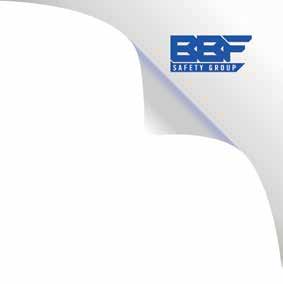
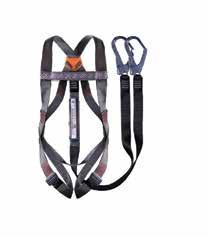
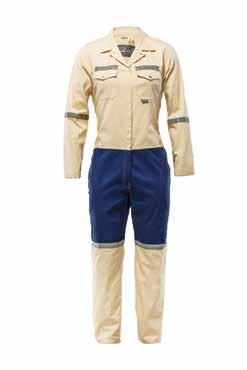

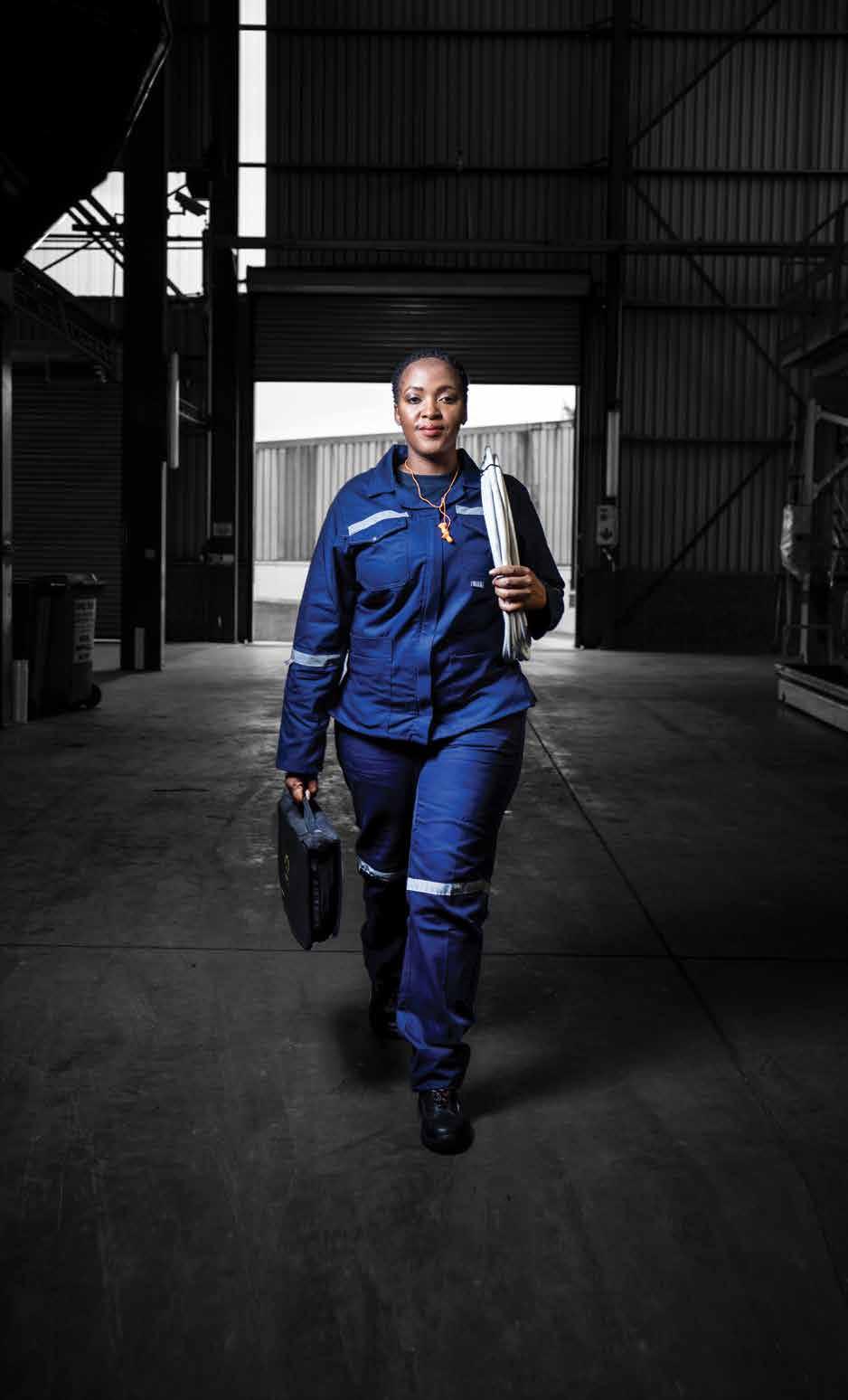





















































 BOSCH REXROTH SMART MINE
BOSCH REXROTH SMART MINE






































































































